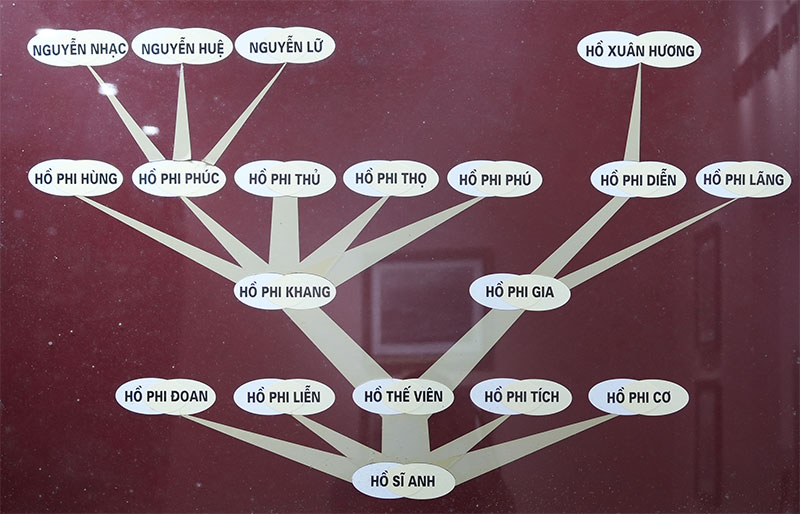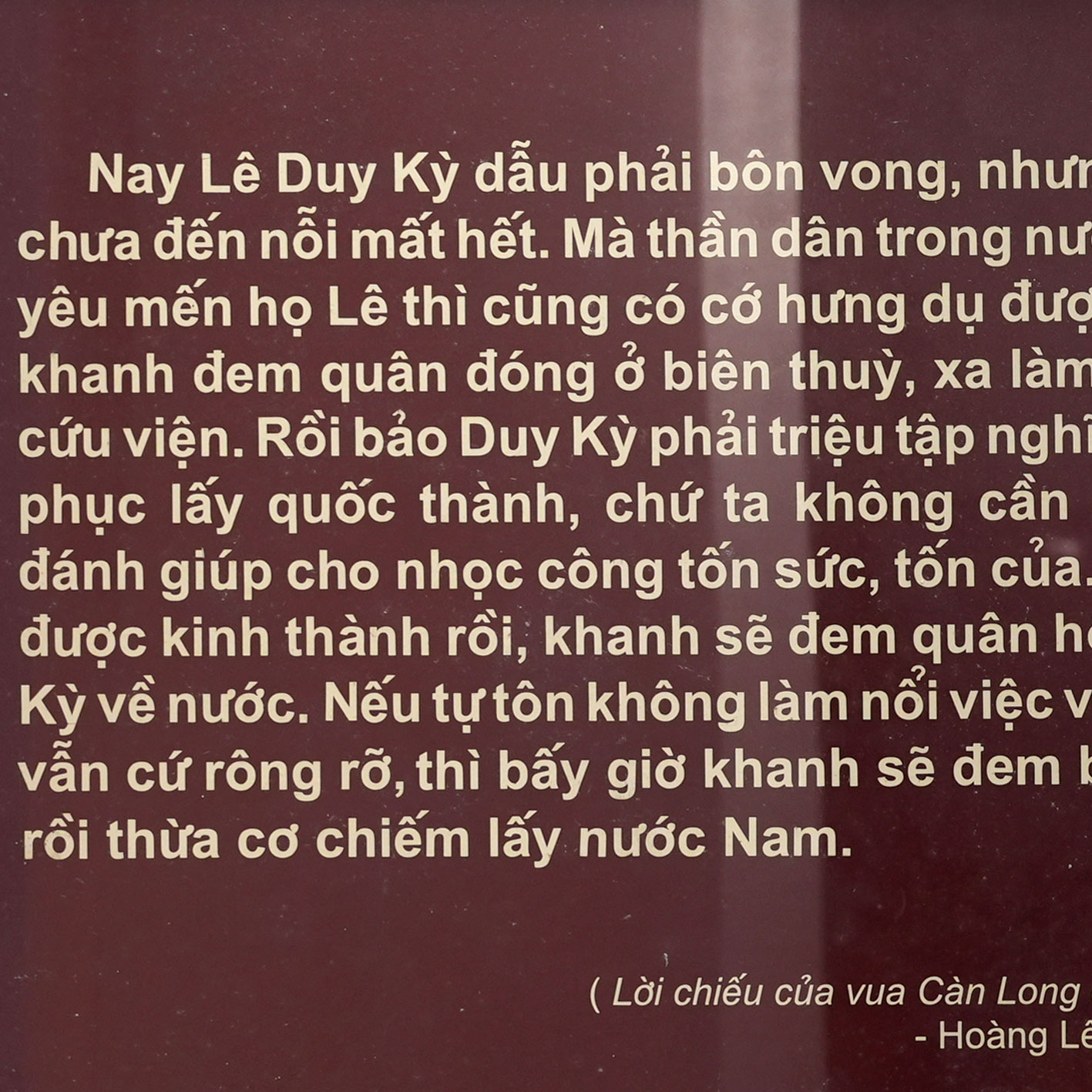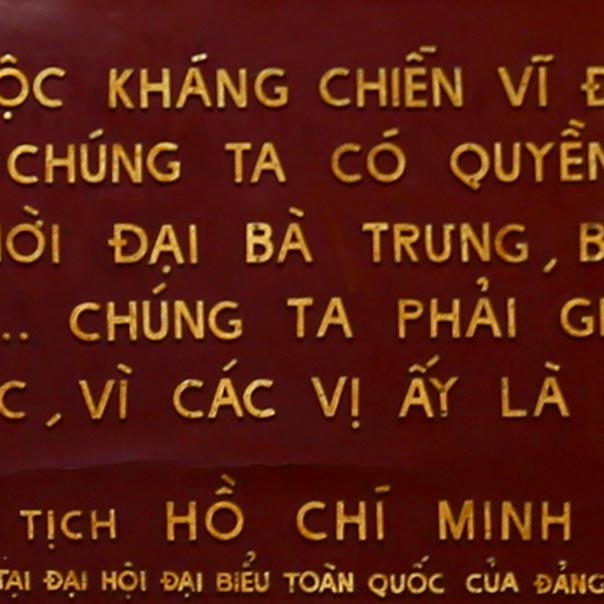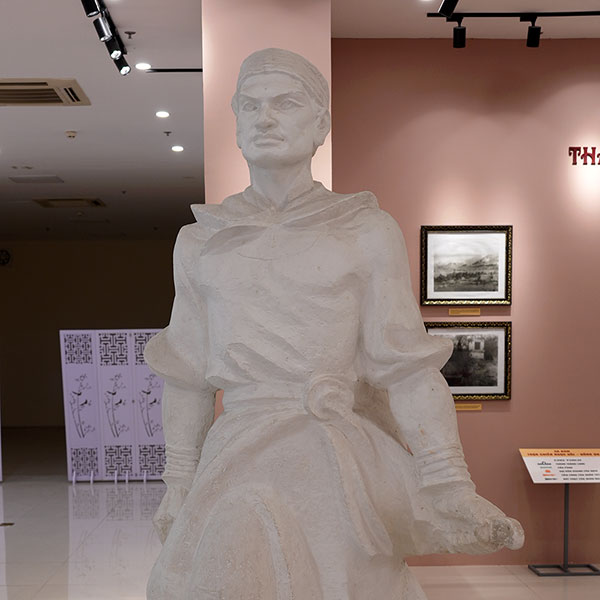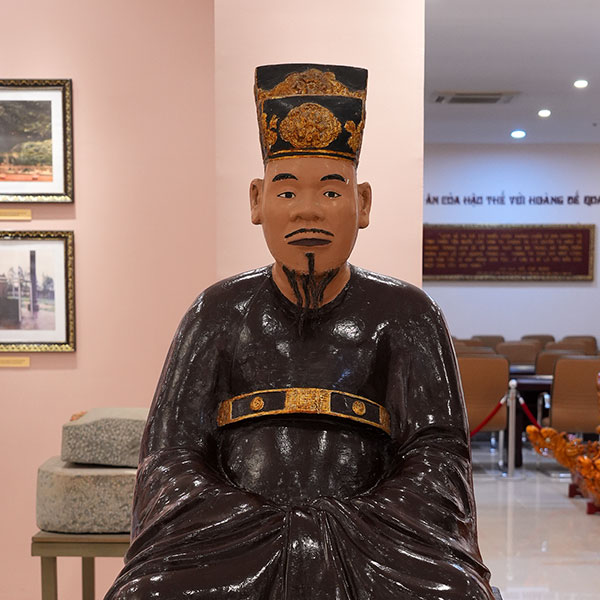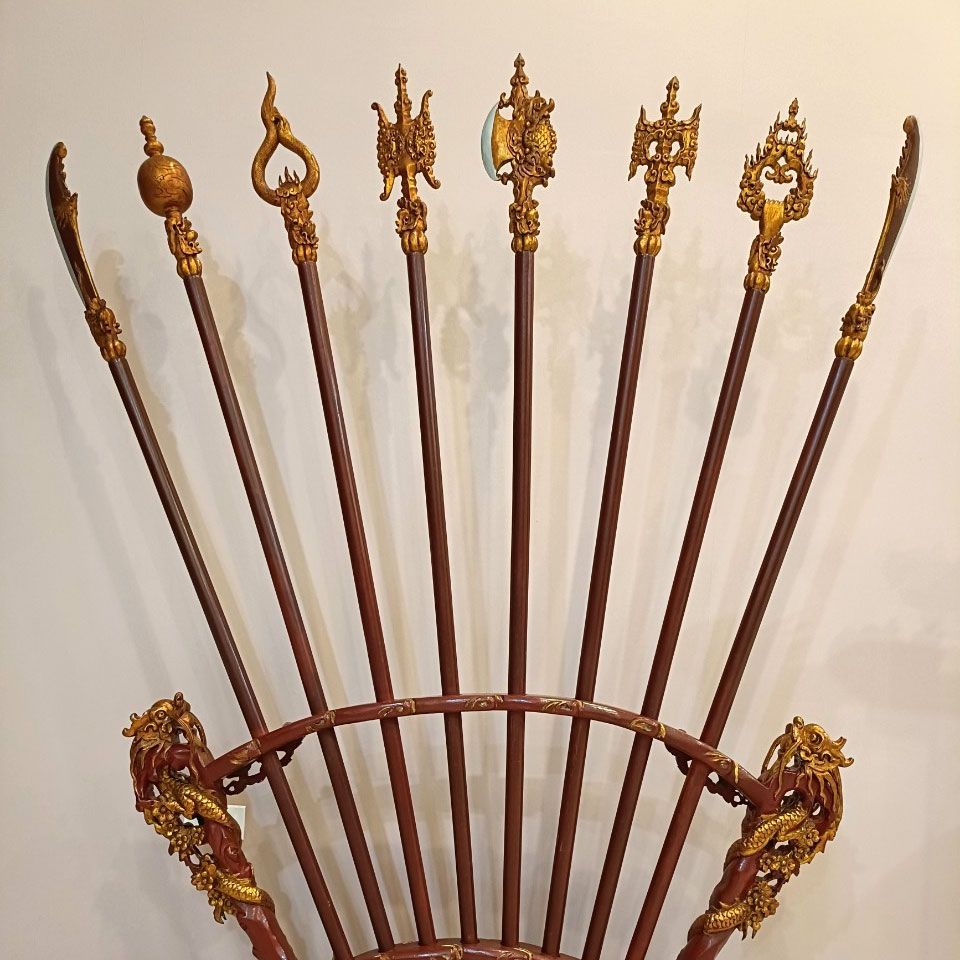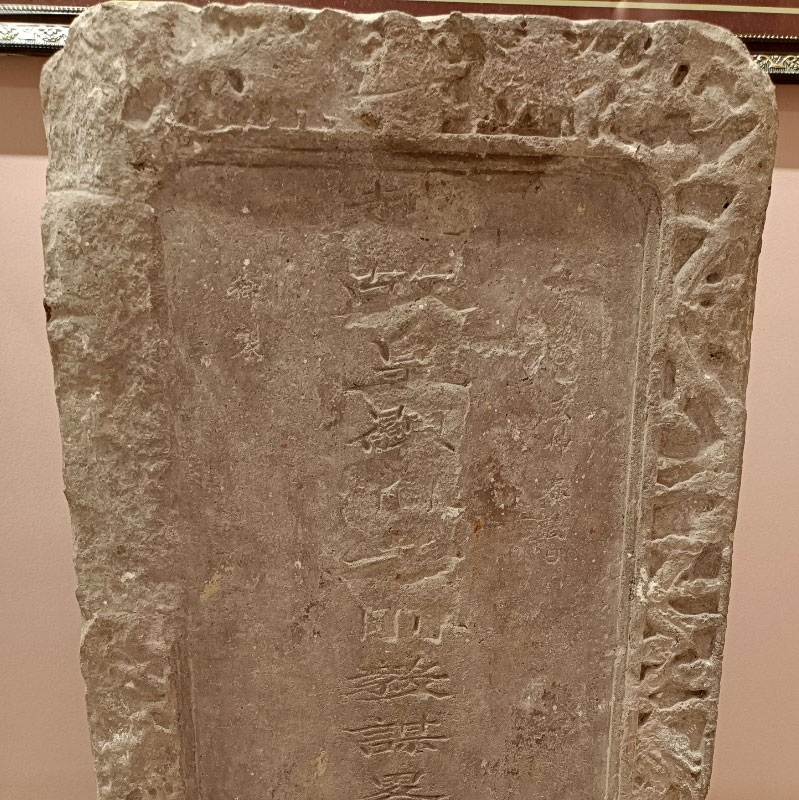From a peasant uprising movement that rose up to overthrow the heavy oppression of the Trinh and Nguyen feudal groups, the Tay Son movement, under the genius leadership of the cloth-shirted hero Quang Trung, rose up to undertake the mission of defeating foreign invaders, firmly protecting national independence, realizing national reunification, the peak of the movement was the defeat of nearly 300,000 Manchu invaders in the spring of the Ky Dau 1789, in which the Ngoc Hoi – Dong Da victory was a key battle, with decisive significance in smashing the invading enemy and liberating Thang Long.
In our nation’s history of fighting foreign invaders, it was one of the most resounding victories, an excellent strategic battle that represents the will to win and the strong vitality of our nation, within ten days of fighting, our army and people under the great leadership of Quang Trung wiped out nearly 300,000 invaders and liberated the country.
Based on the research achievements of historians and the collection results of the Museum industry in recent years, the exhibition house widely introduces to the public a number of documents and artifacts about the Tay Son movement and the process leading to the Ngoc Hoi – Dong Da victory which help people understand more about that great history of the nation.
Tamarind Tree – Old Well Painting
Tamarind Tree – Old Well Painting: Ancient tamarind tree, ancient Old Well of Tay Son brothers’ house
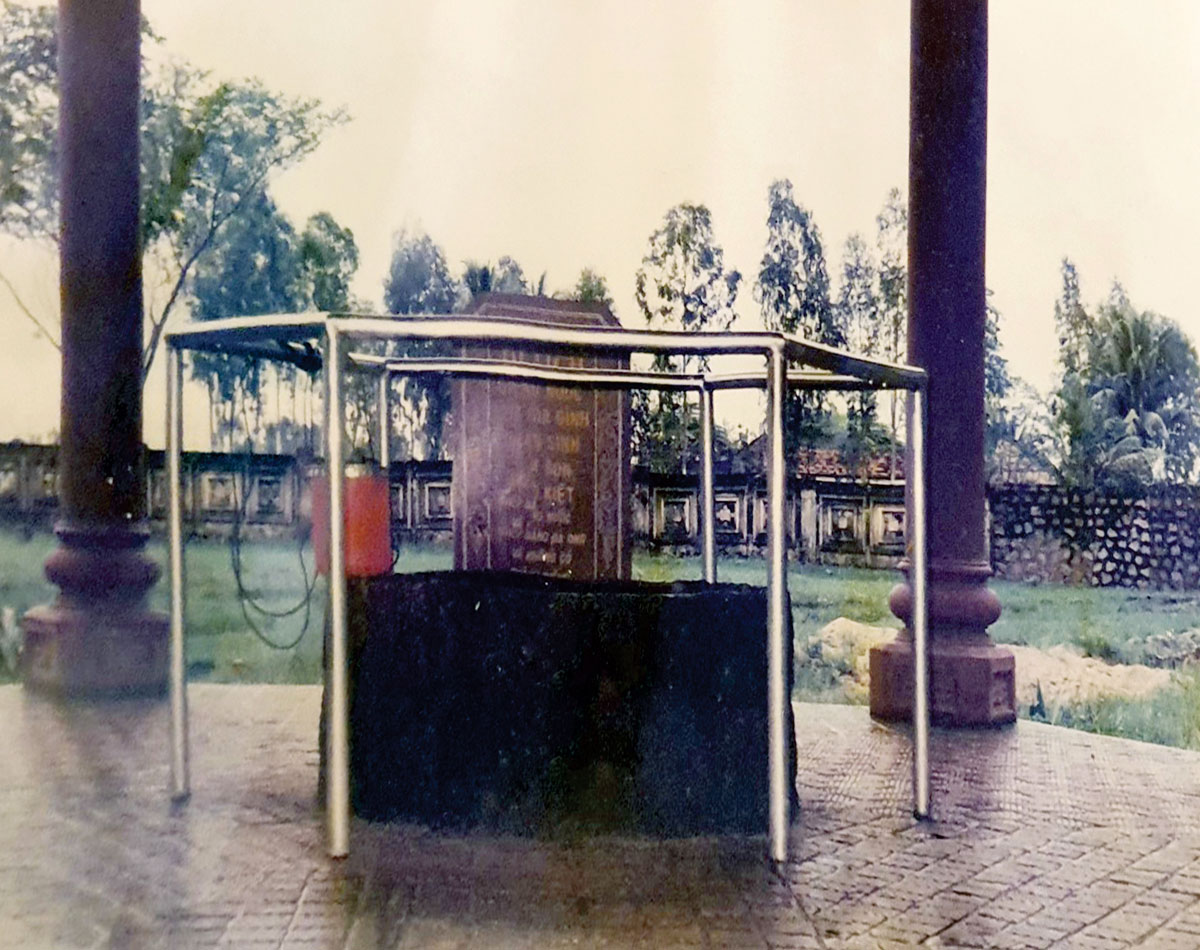
The relic “Old Well” is made of laterite, 0.9m in diameter, and the well wall is 0.8m high. In 1998, the house was built with an ancient roof, hexagonal shape, length of each side 3.45m, the roof was filled with concrete covered with scale tiles, the well wall was protected by a hexagonal wooden frame stylized like bamboo eyes.
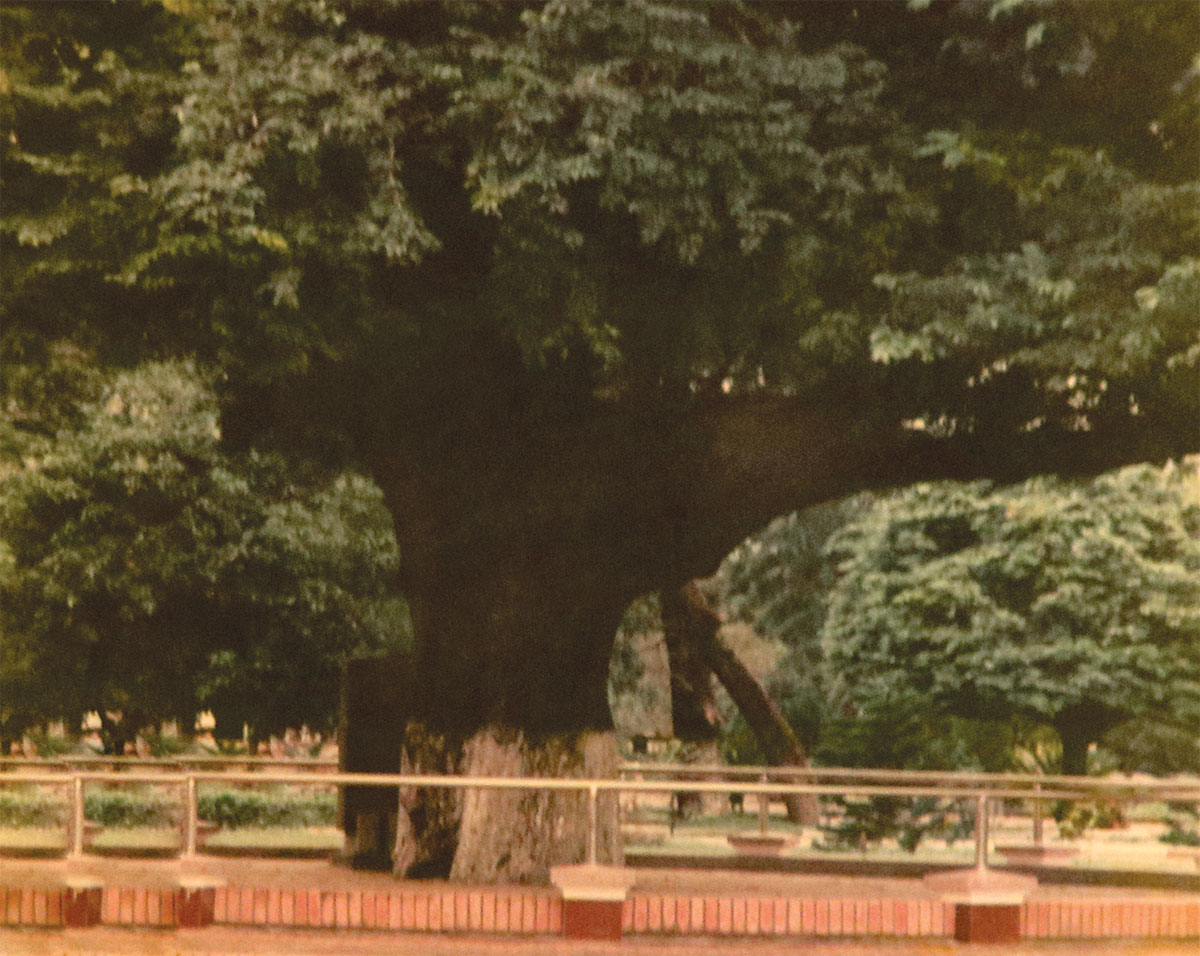
The tamarind tree is about 300 years old, with a tree base circumference of 3.9m, a canopy of up to 30m, dense branches and leaves, shading the entire corner of the garden. In addition to its long-term value and landscape creation, the tamarind tree also has special cultural and historical significance, symbolizing the vitality and longevity of the Tay Son movement in the hearts of the nation.
Materials:
– Historical site of Tay Son Brothers’ Temple – Website of the Ministry of Culture, Sports and Tourism, Department of Cultural Heritage (15/05/2024)
Tamarind Tree – Old Well Painting
Ap Tay Son Painting
Ap Tay Son Painting: The first homeland of the Ho family in Dang Trong

Ap Tay Son is a district located in the southwest of Binh Dinh province, Vietnam. This is an important geographical area in the South Central Coast region, where the central coastal plain with Quy Nhon port and National Highway 19 meets the vast, potential Tay Nguyen (Central Highlands) region. It is a dynamically developing district and the economic, cultural and social center of the West of Binh Dinh province. Tay Son (Binh Khe) was once the birthplace of the peasant uprising of the Tay Son brothers (Nguyen Nhac, Nguyen Hue, Nguyen Lu) who contributed to the unification of the country after nearly 200 years of division under the Trinh – Nguyen Dynasty, as well as fighting against the Siamese invaders in the South and the Manchu Qing army in the North.
Materials: Wikipedia page – The free encyclopedia
Ap Tay Son Painting
Painting of Tay Son Brothers’ Temple
The Historical Site of Tay Son Brothers’ Temple is located in Phu Phong town, Tay Son district, Binh Dinh province. The Historical Site has particularly important historical, cultural and scientific significance, associated with the names of three brothers Nguyen Nhac, Nguyen Hue and Nguyen Lu of the Tay Son uprising movement, the Tay Son Dynasty at the end of the 18th century, typified by the national hero Quang Trung.
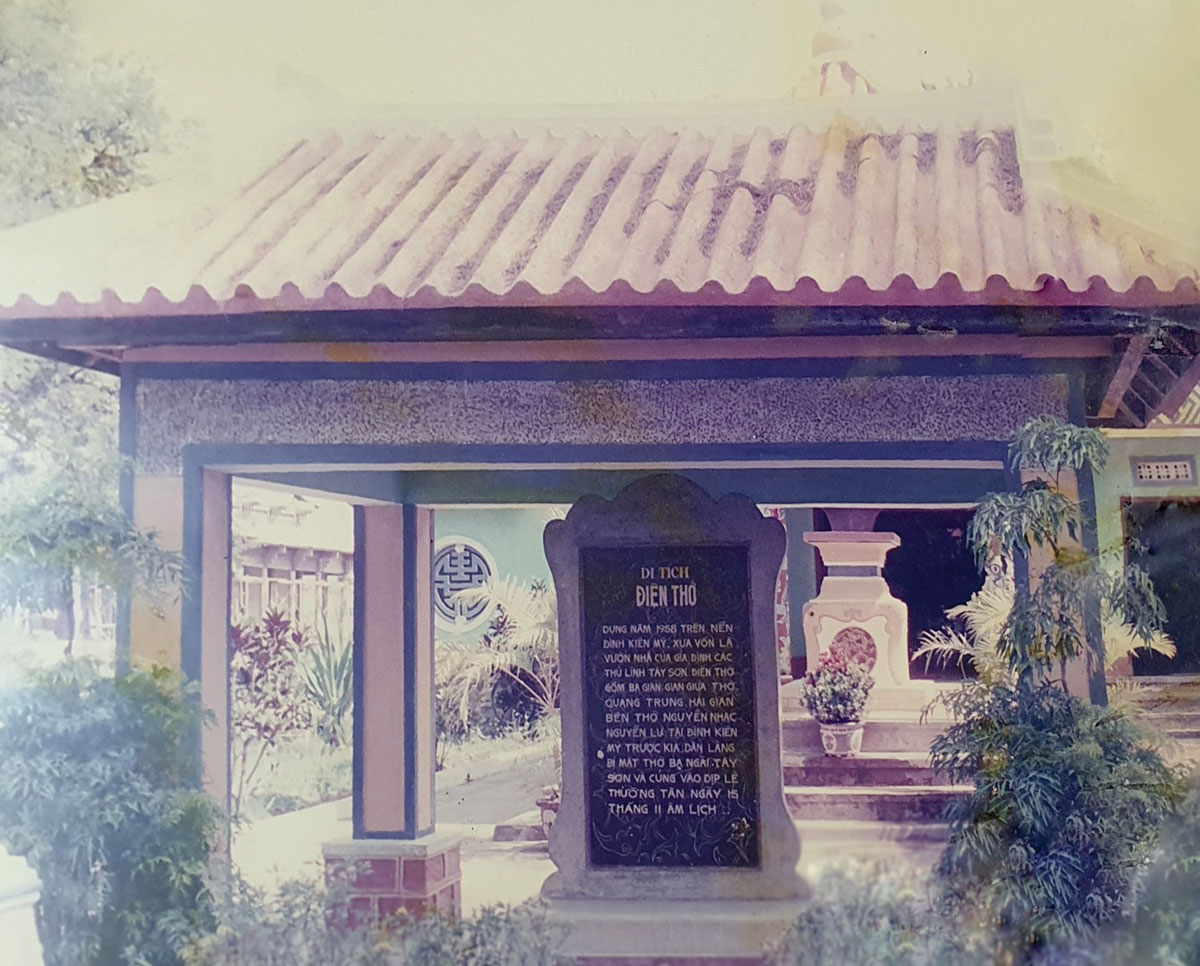
Tay Son Brothers’ Temple was rebuilt in 1998, on the old house of Mr. and Mrs. Ho Phi Phuc to worship the three Tay Son brothers.
Materials: The Historical Site of Tay Son Brothers’ Temple – Historical site of Tay Son Brothers’ Temple – Website of the Ministry of Culture, Sports and Tourism, Department of Cultural Heritage (15/05/2024)
Painting of Tay Son Brothers’ Temple
Painting of Historical site of Lang Mound
Painting of Historical site of Lang Mound: The maternal hometown of the Tay Son brothers
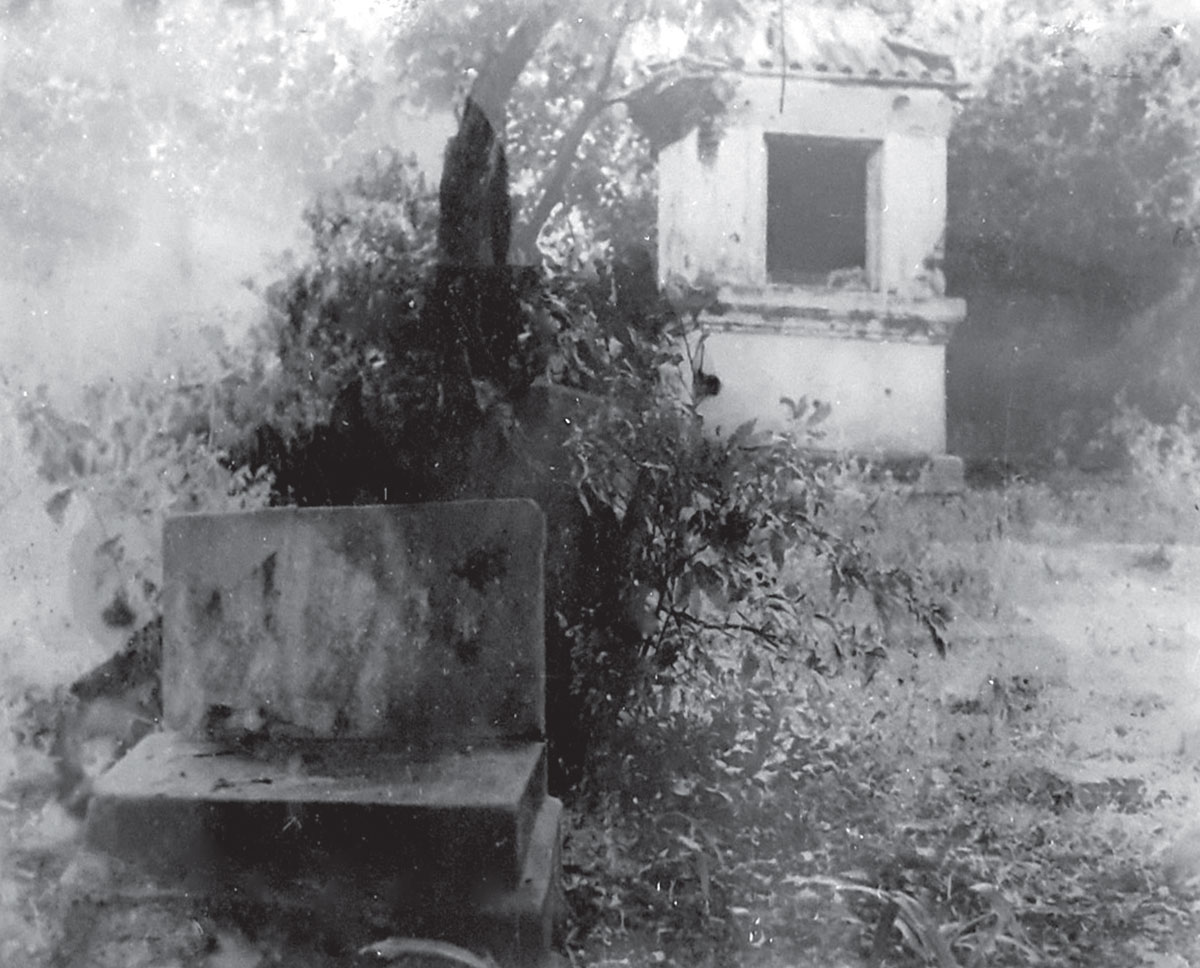
Historical site of Lang Mound is located in Phu Lac village, Binh Thanh commune, Tay Son district, Binh Dinh province, is about 2km from Quang Trung Museum, in the West-North direction. Here, with the remaining traces of the garden and the old house floor, the hometown of Mrs. Nguyen Thi Dong is the mother of Tay Son brothers Nguyen Nhac, Nguyen Hue and Nguyen Lu – outstanding leaders of the Tay Son peasant movement in the 18th century. The Historical site was ranked at the National level on November 16, 1988.
Materials: Binh Dinh – Historical site of Lang Mound, Motherland of Tay Son leaders. Construction newspaper (Baoxaydung.com.vn 12/2/2024)
Painting of Historical site of Lang Mound
Painting of the Tay Son family’s genealogy chart
Mr. Ho Phi Phuc gave birth to three children, Nguyen Nhac, Nguyen Hue, and Nguyen Lu
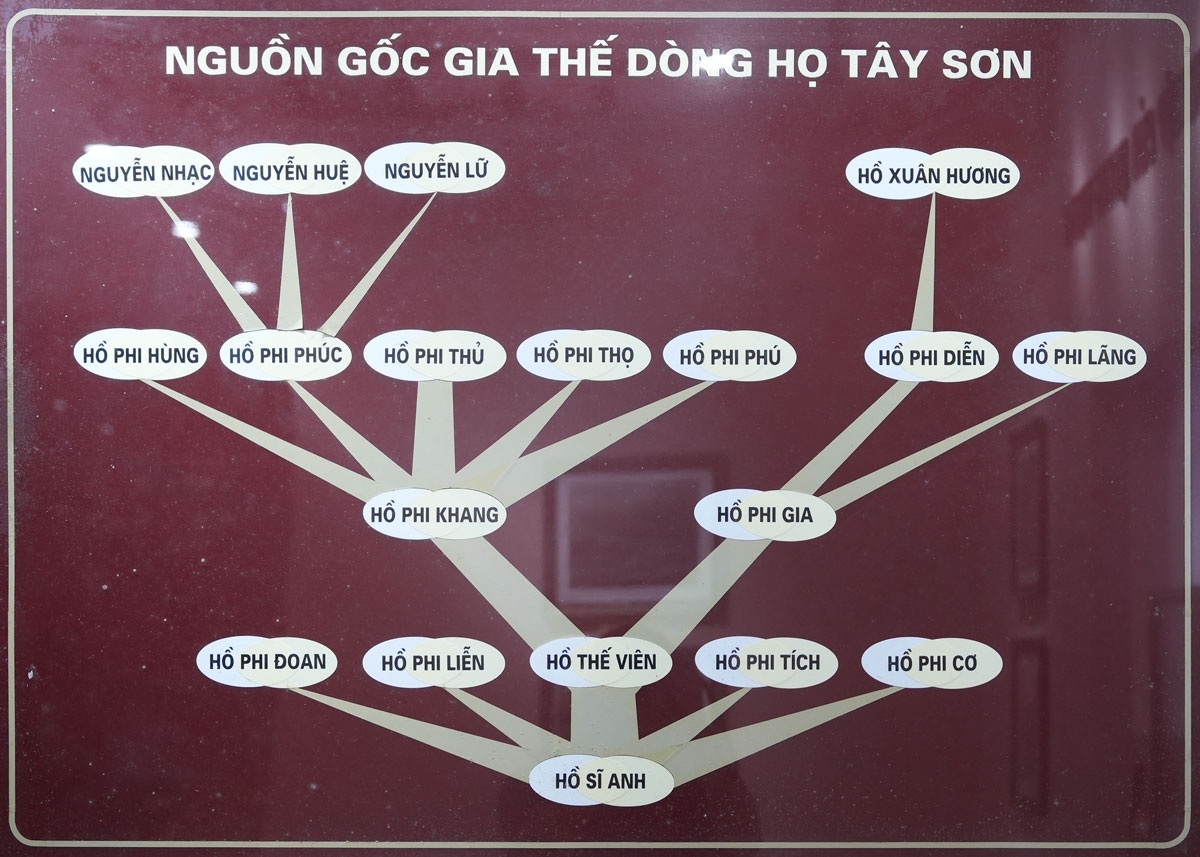
The Tay Son family was originally the Ho family, they settled in NGHE AN. The 4th generation ancestor of Quang Trung – Nguyen Hue was Ho Si Anh in Thai Lao village, Hung Nguyen district, Nghe An province, who was captured by Lord Nguyen and brought to Dang Trong to explore the Upper Tay Son region. The descendant of Mr. Ho Si Anh in Binh Dinh is Mr. Ho Phi Phuc, who was ambitious, wise, and clever, both farming and trading betel and areca, and married Mrs. Nguyen Thi Dong, who is the only daughter of a rich man in Kien Thanh hamlet, Tuy Vien district, Quy Nhon district (now Phu Phong town, Tay Son district, Binh Dinh province). In order for their son to inherit the property and take care of the incense sticks for his mother’s side, Mr. and Mrs. Ho Phi Phuc changed the family names of their three children to their mother’s family name, Nguyen family; Nguyen Nhac, Nguyen Hue and Nguyen Lu
Materials: Tay Son Museum – Binh Dinh
Painting of the Tay Son family’s genealogy chart
Painting of Elephant training ground

Painting of Elephant training ground: Where female general Bui Thi Xuan used to practice fighting elephants
Painting of Elephant training ground
An Khe Truong painting
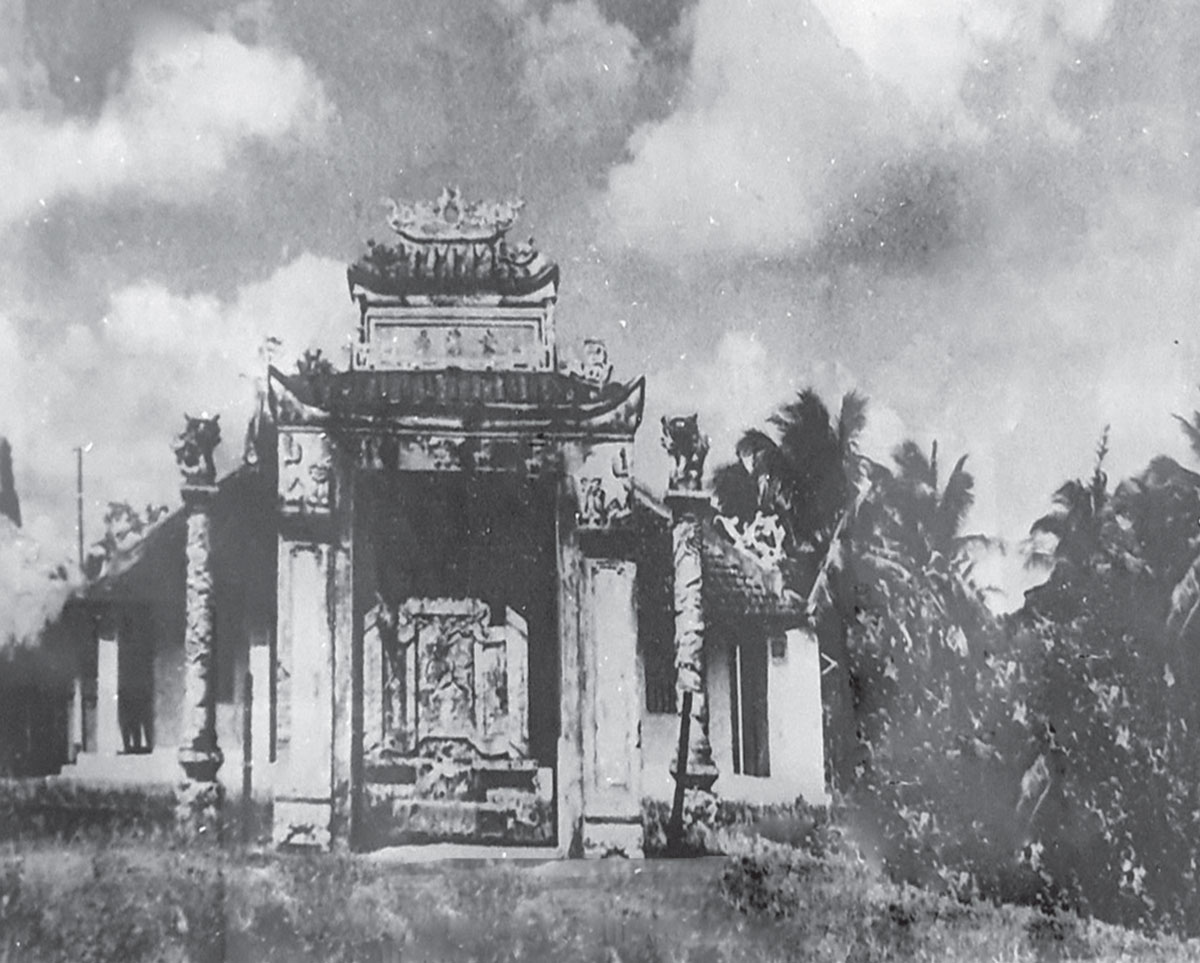
An Khe Truong painting: One of the first bases of the Tay Son insurgent army
An Khe Truong painting
Diagram of Invasion cause of the Qing Dynasty
At the end of the 18th century, the Qing Dynasty expanded to invade the outer regions of Mongolia, Xinjiang, Qinghai, and Tibet. After pacifying the North, they are about to invade our country. When Le Chieu Thong went to ask for help, the Qing Dynasty took the opportunity to launch a war to invade our country.
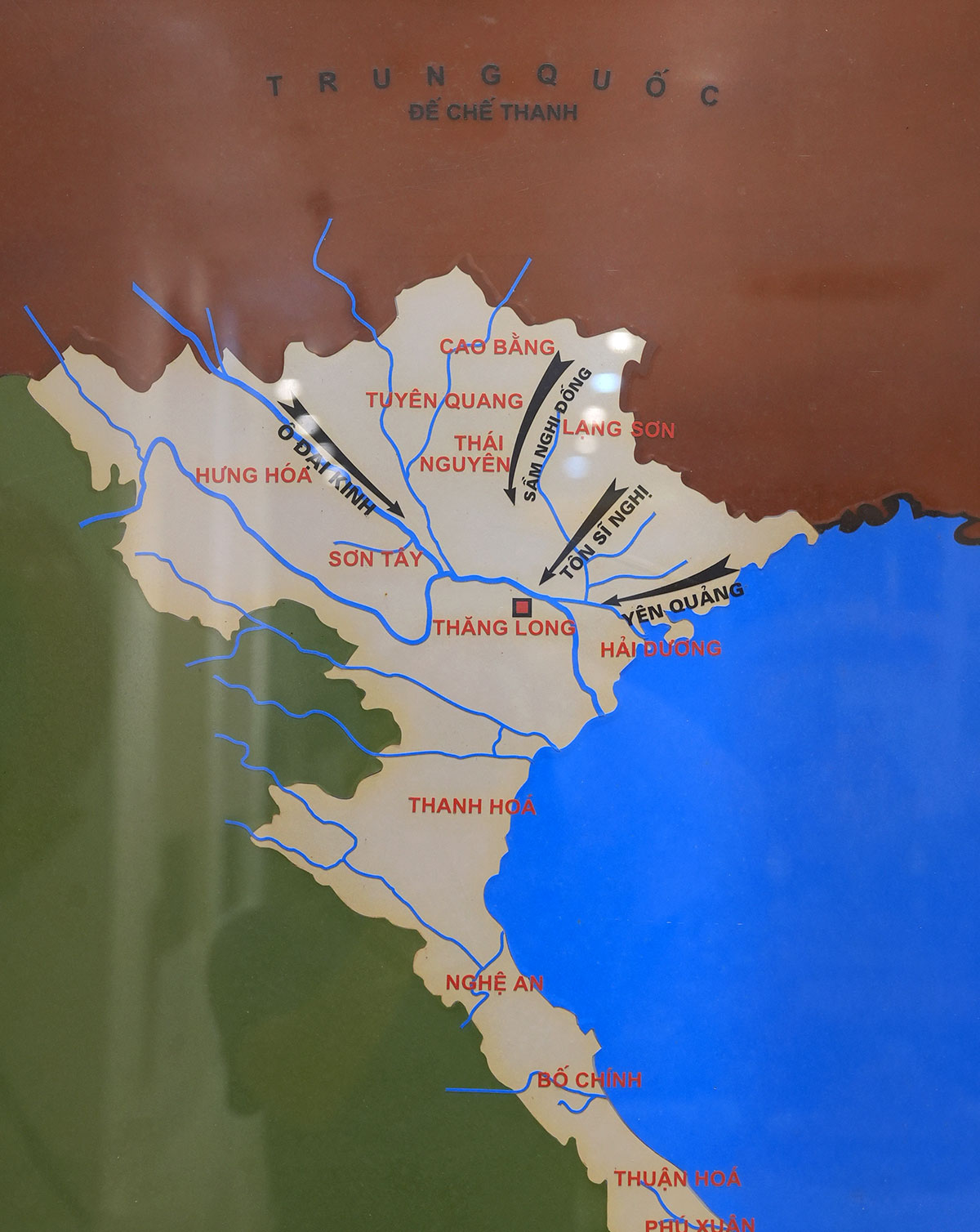
The Qing army divided into four armies to attack our country:
The first army, commanded by Ton Si Nghi, passed through Lang Son and advanced to Thang Long.
The second army, commanded by the prefect Sam Nghi Dong, passed through Cao Bang and advanced
The third army, commanded by Admiral O Dai Kinh, passed through Tuyen Quang and advanced
The fourth army entered through Quang Ninh road.
Materials: Vietnam History Book Volume 01 – p 318 Hanoi Social Sciences Publishing House 1971
Diagram of Invasion cause of the Qing Dynasty
Ngo Thi Nham’s retreat policy
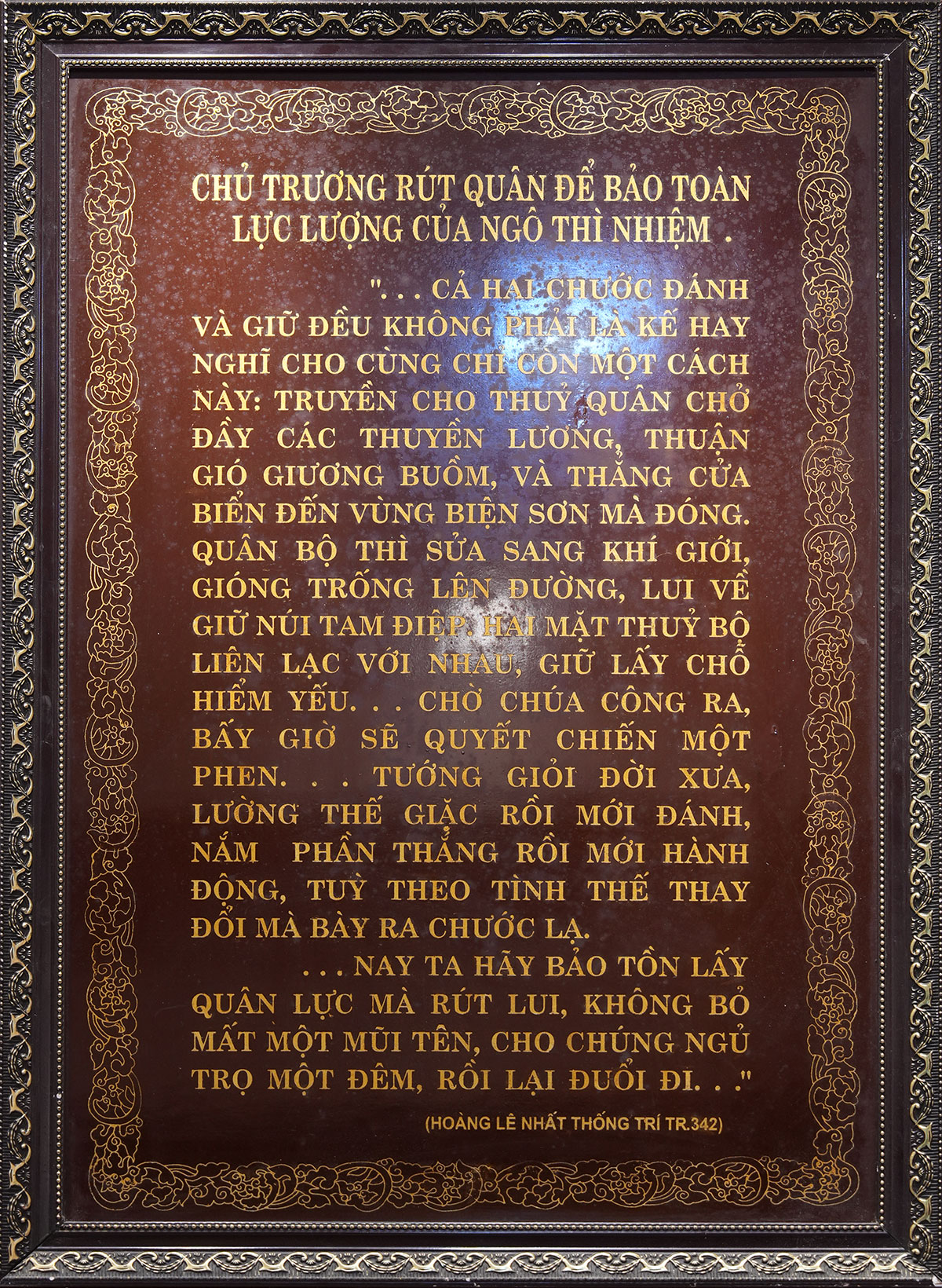
When the Qing army invaded, Ngo Thi Nham had a good plan: retreating the Navy to Bien Son, retreating the army to defend the Tam Diep line to preserve the force, he advocated “Both sides fighting and holding are not a good plan. In the end, there is only one way to tell the Navy to load the ships with provisions, smoothly set sail, and go straight to the seaport to the Bien Son area to station troops. The soldiers prepared their weapons, sounded drums, and headed back to defend Tam Diep mountain. The two sides, the navy and the army, contacted each other, held key positions and waited for the lord to come, then we would fight decisively. The good generals of ancient times anticipated the enemy’s position before fighting, grasped the victory and then acted, and planned ahead according to the changing situation. Now we will preserve our military strength and retreat without losing a single arrow. Let them stay overnight and then chase them away”
Excerpted from Hoang Le Nhat Thong Chi – p342
Ngo Thi Nham’s retreat policy
Diagram of Rach Gam – Xoai Mut battle
Resistance against Siamese invaders (1784 – 1785)
Rach Gam – Xoai Mut battle
In 1784, more than 50,000 Siamese troops followed two waterway and road to invade our country and by the end of 1784 they had conquered a few areas in the west of Gia Dinh.
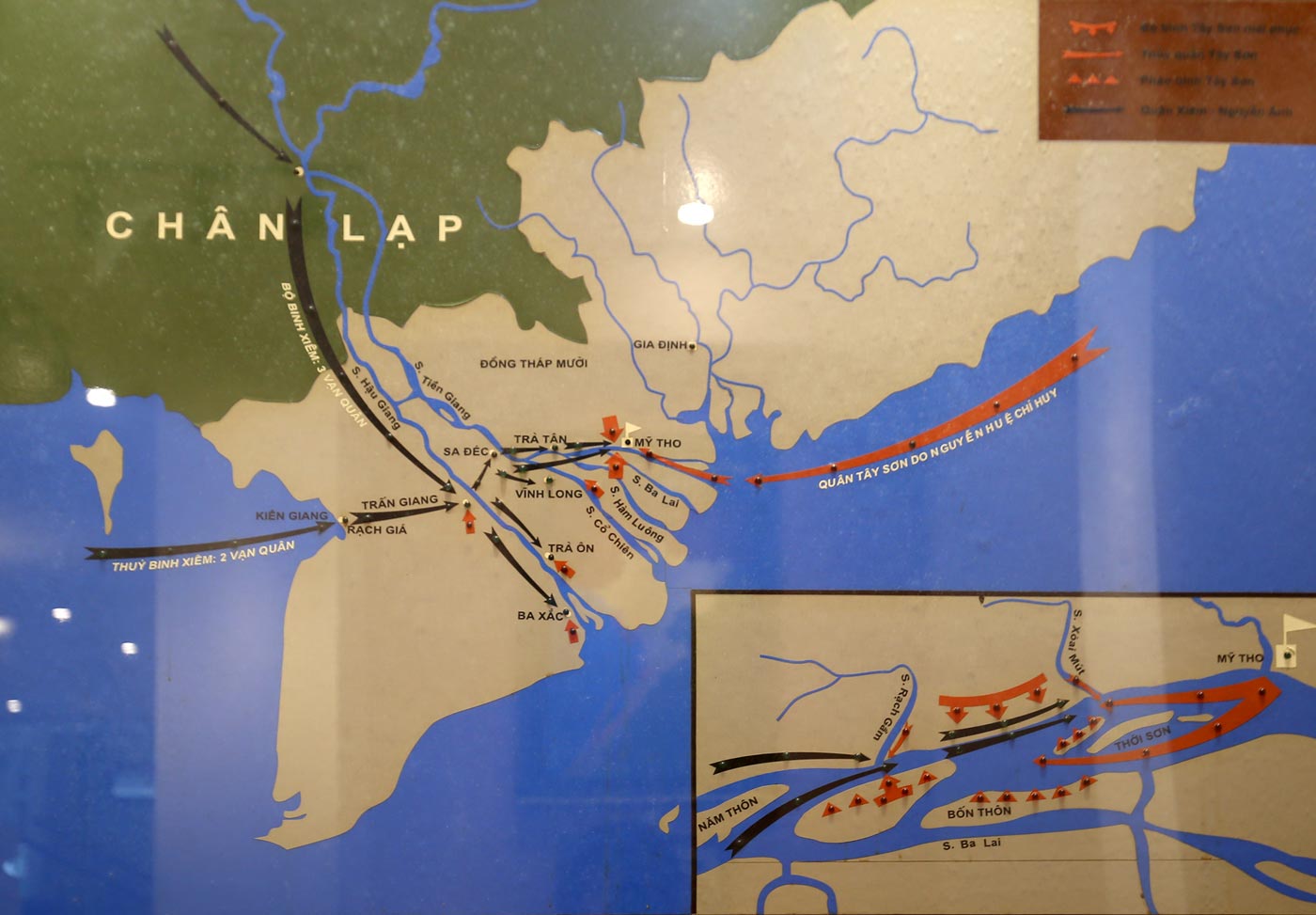
In 1785, Nguyen Hue sent troops to My Tho to attack the Siamese army. He took advantage of the extremely dangerous rising and falling tides in the Rach Gam – Xoai Mut river section as a decisive battle ground for the enemy.
This river section is about six kilometers long and about 1 kilometer wide. In the middle of the river is Thoi Son island, on both sides of the river are dense vegetation, and the north is the vast Dong Thap Muoi. Nguyen Hue decided to arrange a large ambush here:
- The Navy hid their troops deep in the Rach Gam – Xoai Mut river branches and behind the islets.
- Infantry ambushed on the banks and on islands in the middle of the river.
On the night of the 19th and the early morning of January 20, 1785 (Giap Thin year), 50,000 Siamese troops entered the decisive battle with the Tay Son insurgents. When the enemy troops were entered inside the ambush battlefield, the artillery on the boats located on the islands fired extremely fiercely, then the ambush troops on both sides of the river surrounded and flanked, causing all Siamese warships to be sunk here.
The battle of Rach Gam – Xoai Mut is considered an extremely resounding naval battle, it affirmed the great strength of the insurgents and the military genius of Nguyen Hue.
Materials: Vietnam History Book Volume 01 –Hanoi Social Sciences Publishing House 1971
Diagram of Rach Gam – Xoai Mut battle
King Quang Trung marched his army to destroy the Qing army
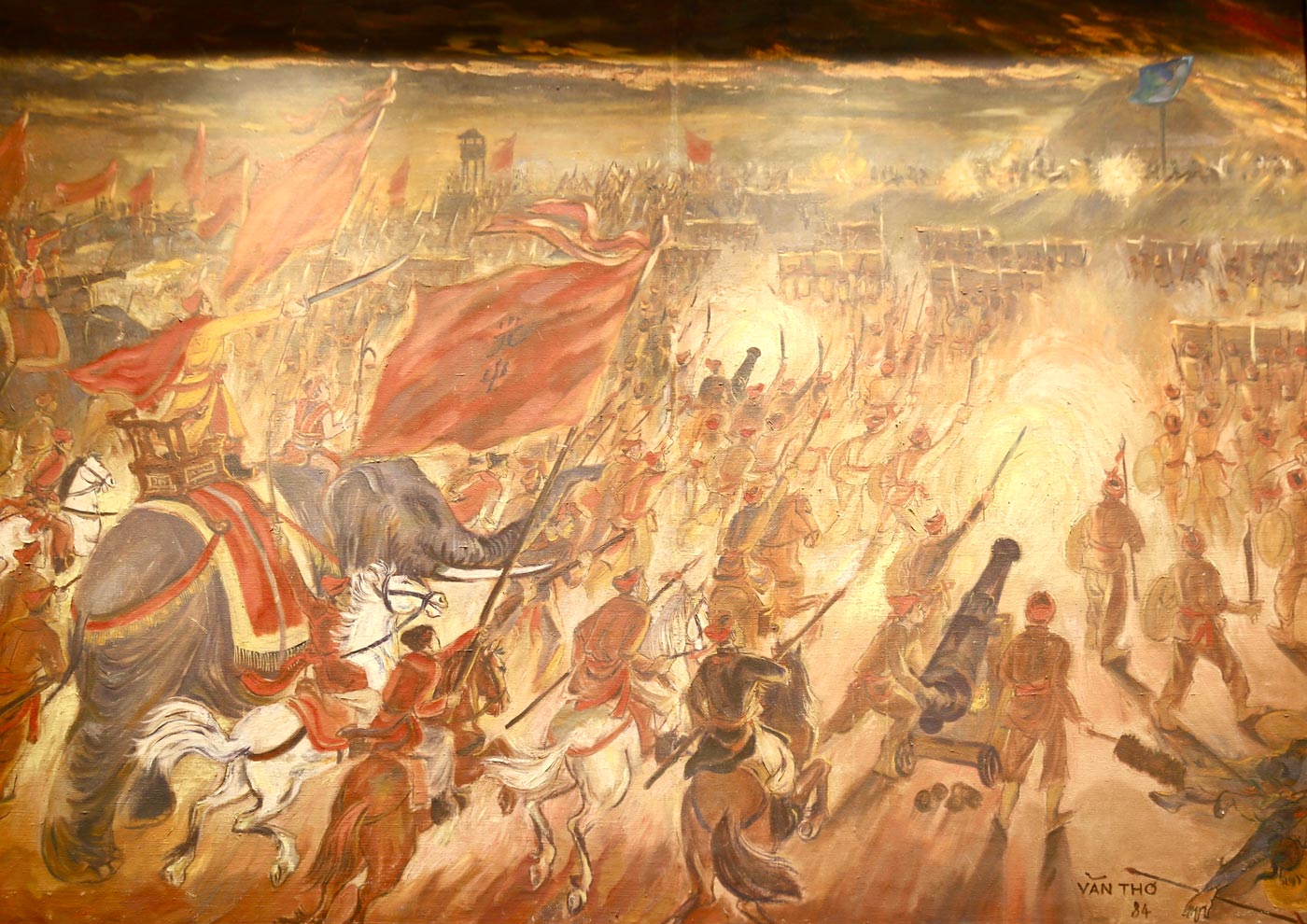
King Quang Trung marched his army to destroy the Qing army
King Qianlong’s edict to Ton Si Nghi
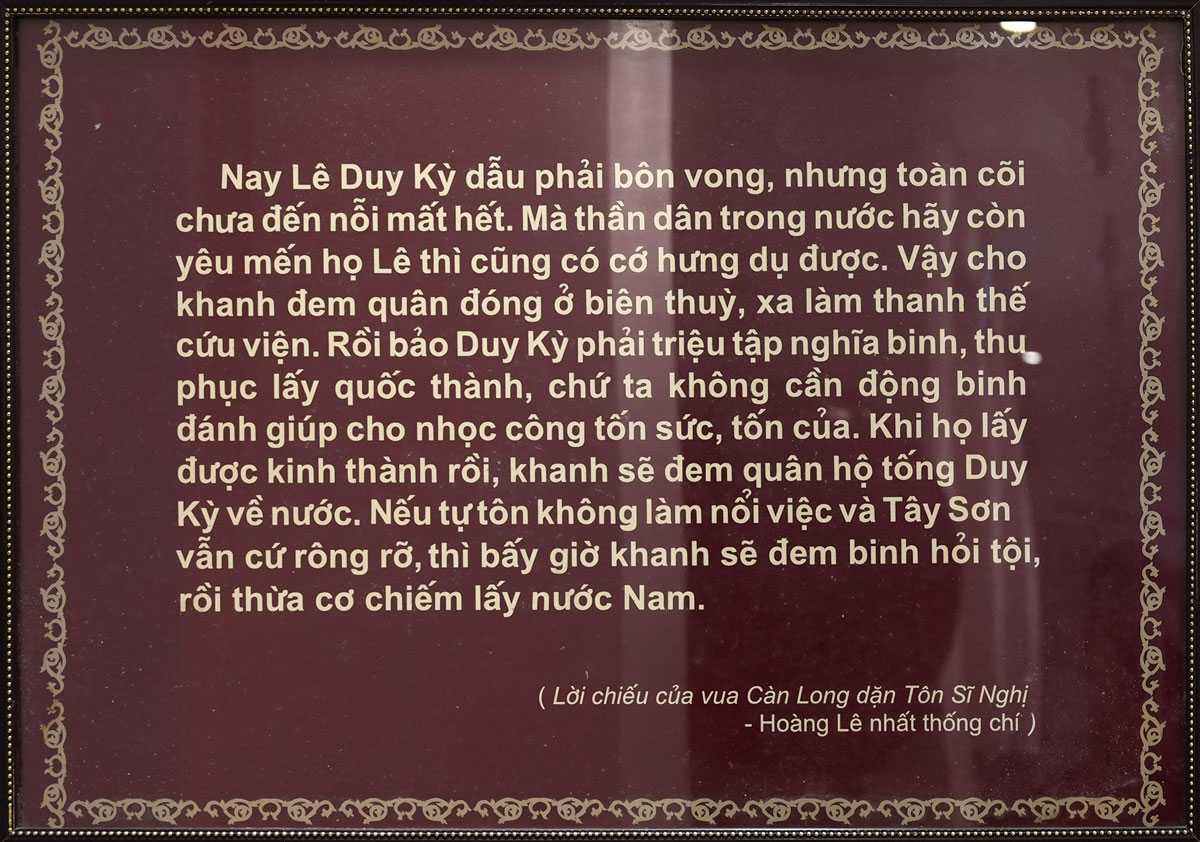
At the end of the year Mau Than 1788, taking advantage of King Le Chieu Thong’s act of “rước voi về dày mả tổ” (act of those who betray their country and their own people), King Qianlong issued an edict directly setting out a strategic direction for Ton Si Nghi to thoroughly take advantage of the contradictions in our country to carry out his ambition of invasion “Now, although Le Duy Ky has to go into exile, his entire family is not yet lost. As long as the people in the country still love the Le family, there is still a reason to prevail. So let You station troops at the border and far away to create a reputation for relief. Then told Duy Ky to summon the insurgents and conquer the capital city, but we don’t need to mobilize soldiers to help with the hard work, effort, and money. When they take the capital, You will bring troops to escort Duy Ky back to the country. If self-respect cannot do the job and the Tay Son is still arrogant, then You will bring troops and take the opportunity to take over the Southern country and bring soldiers to question the crime”
Materials: King Qianlong’s edict to Ton Si Nghi – Hoang Le Nhat Thong Chi
King Qianlong’s edict to Ton Si Nghi
Excerpted from King Quang Trung’s “Chiếu lên ngôi” (the Proclamation to the Throne)
On November 25, the year of Mau Than, ie December 22, 1788, Nguyen Hue solemnly held the official coronation ceremony as Emperor in Phu Xuan, set the reign as Quang Trung and immediately ordered the army to depart.
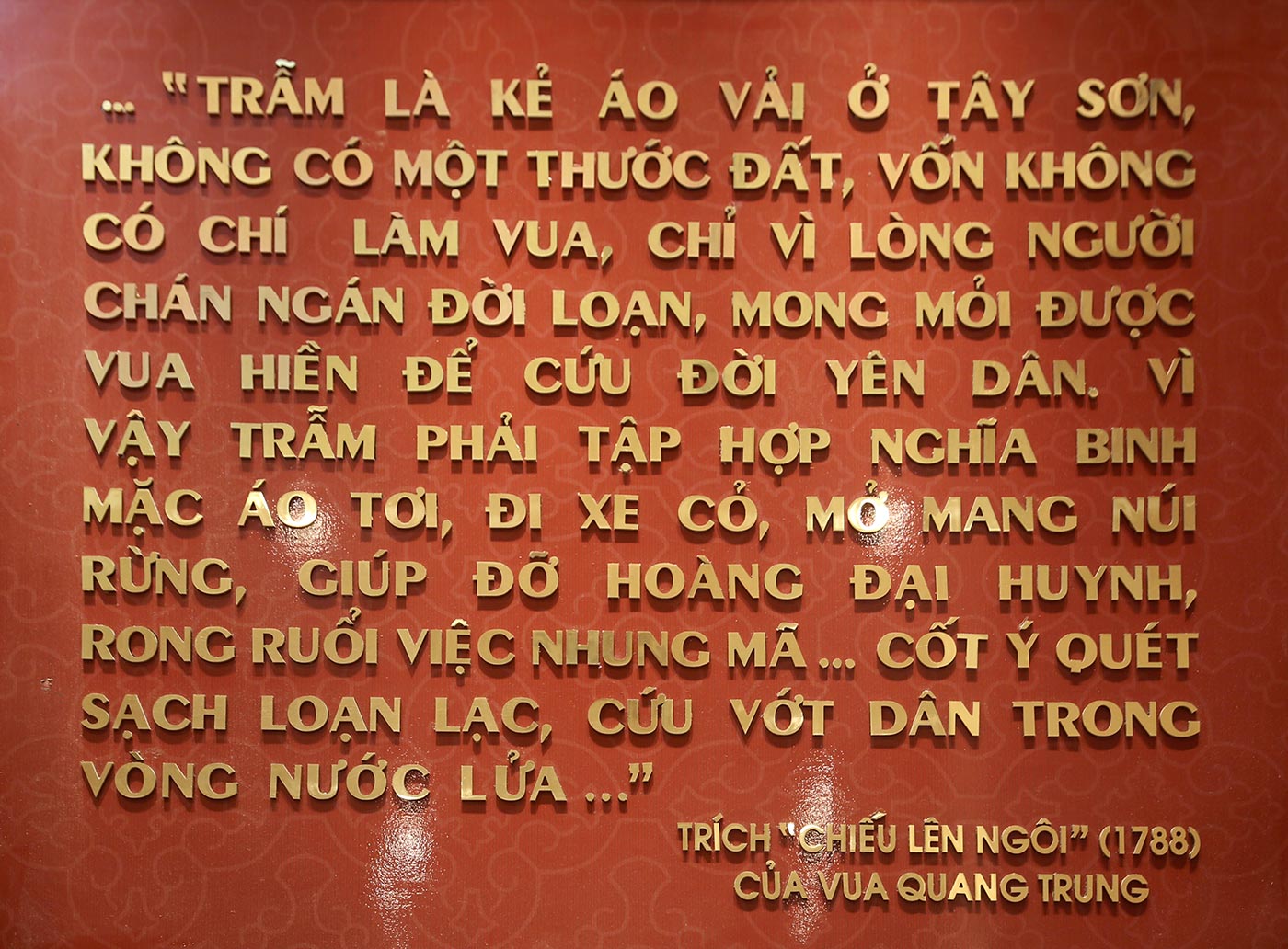
Excerpt from King Quang Trung’s “Chiếu lên ngôi” written in 1788: “I am a commoner in Tay Son, without a single inch of land, and without the will to become king. It is only because the people are tired of the chaotic world, longing for a wise king to save the world and bring peace to the people. Therefore, I think I must gather righteous soldiers, wear raincoats and ride grass carts to expand the mountains and forests, help my elder brother, travel on horseback… with the intention of wiping out chaos, saving the people from the fire and water”.
Materials: Vietnam History Book Volume 01 –Hanoi Social Sciences Publishing House 1971 – p 350
Excerpted from King Quang Trung’s “Chiếu lên ngôi” (the Proclamation to the Throne)
Words of filial piety to the generals and soldiers of King Quang Trung (the Proclamation against the Qing)
Words of filial piety to the generals and soldiers of King Quang Trung in Thanh Hoa also expressed his strong determination to defeat foreign invaders to protect national independence
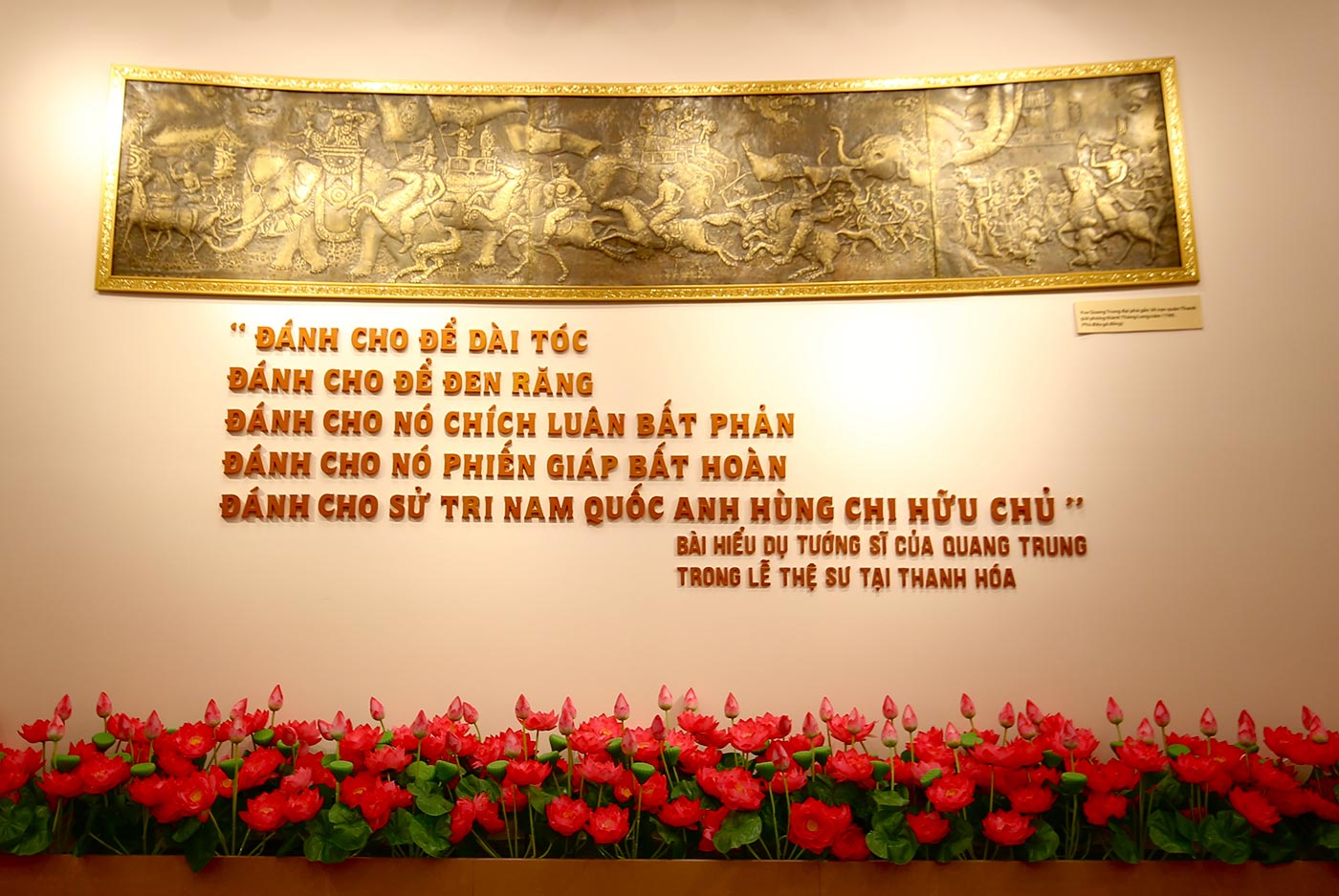
“Fight until their hair grows long
Fight until their teeth turn black
Fight until they never turn back
Fight until they never return with their armor
Fight so that history knows that the Southern nation has a heroic owner”
Materials: Vietnam History Book Volume 01 –Hanoi Social Sciences Publishing House 1971 – p 353
Words of filial piety to the generals and soldiers of King Quang Trung (the Proclamation against the Qing)
Diagram of the Speed Marching Route
Deeply aware of the importance of the number of troops after the war and overcoming the situation of comparing too many troops between us and the enemy, Quang Trung, on the march, tried to supplement the number of troops (soldiers’ recruitment), with a passionate patriotic tradition, tens of thousands of young men have voluntarily joined the the Tay Son army and enthusiastically set out to destroy the enemy and save the country. In just over 10 days of stopping troops in Nghe An, Nguyen Hue recruited tens of thousands of new soldiers, bringing the number of Tay Son troops to 100,000 troops and several hundred war elephants. The Tay Son movement, which originated from a peasant uprising at that time, developed into a national movement. On January 15, 1789, the Tay Son army arrived at Tam Diep, Quang Trung, divided his army into 5 groups with 3 directions to attack Thang Long, the Emperor personally commanded the central army to march quickly towards the Thang Long Imperial Citadel.

Materials: Vietnam History Book Volume 01 – Hanoi Social Sciences Publishing House 1971- p 530
Diagram of the Speed Marching Route
Painting of King Quang Trung commanding the Ngoc Hoi battle

Painting of King Quang Trung commanding the Ngoc Hoi battle
Diagram of Dong Da battlefield area

Diagram of Dong Da battlefield area
Painting of Admiral Dang Tien Dong fighting Dong Da battle
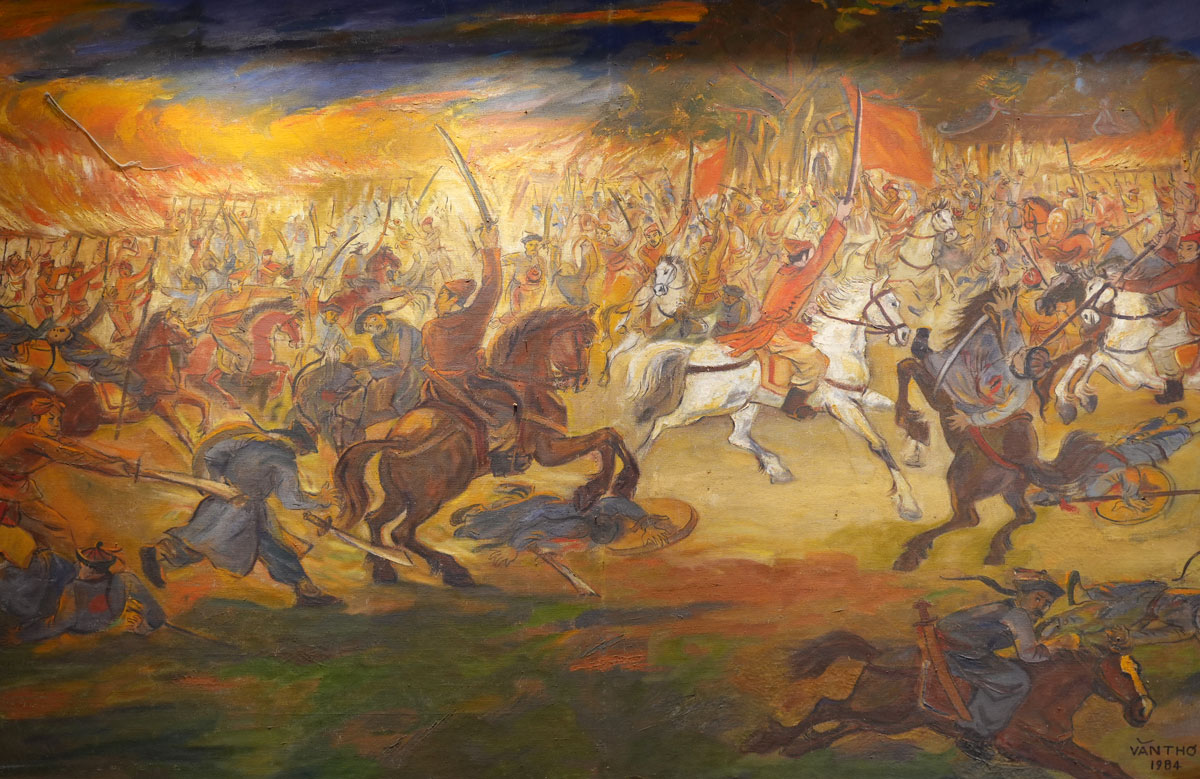
Painting of Admiral Dang Tien Dong fighting Dong Da battle
Diagram of Ngoc Hoi – Dong Da battle

Diagram of Ngoc Hoi – Dong Da battle
Painting of Ton Si Nghi retreated
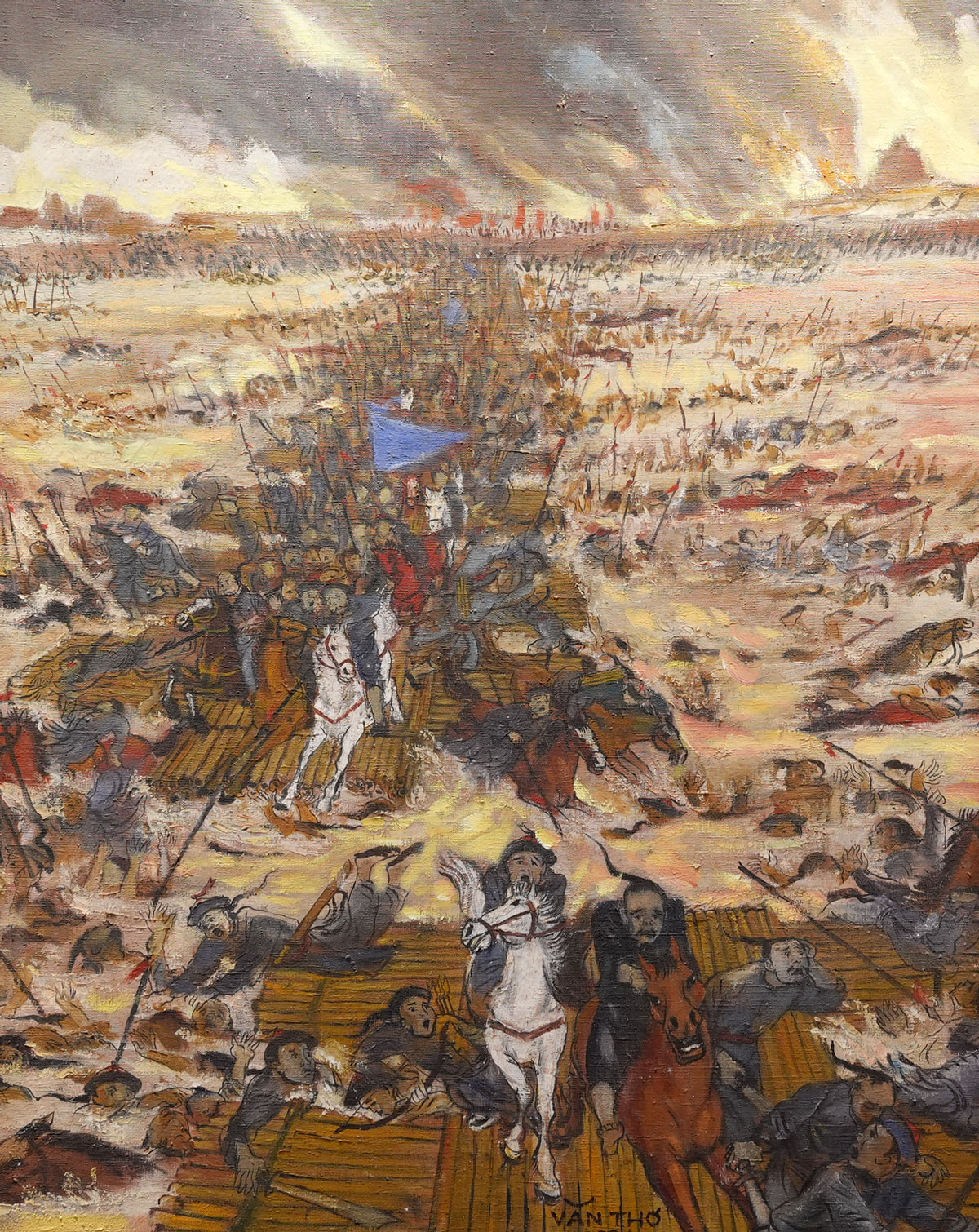
Painting of Ton Si Nghi retreated
Royal Edict for Agriculture production
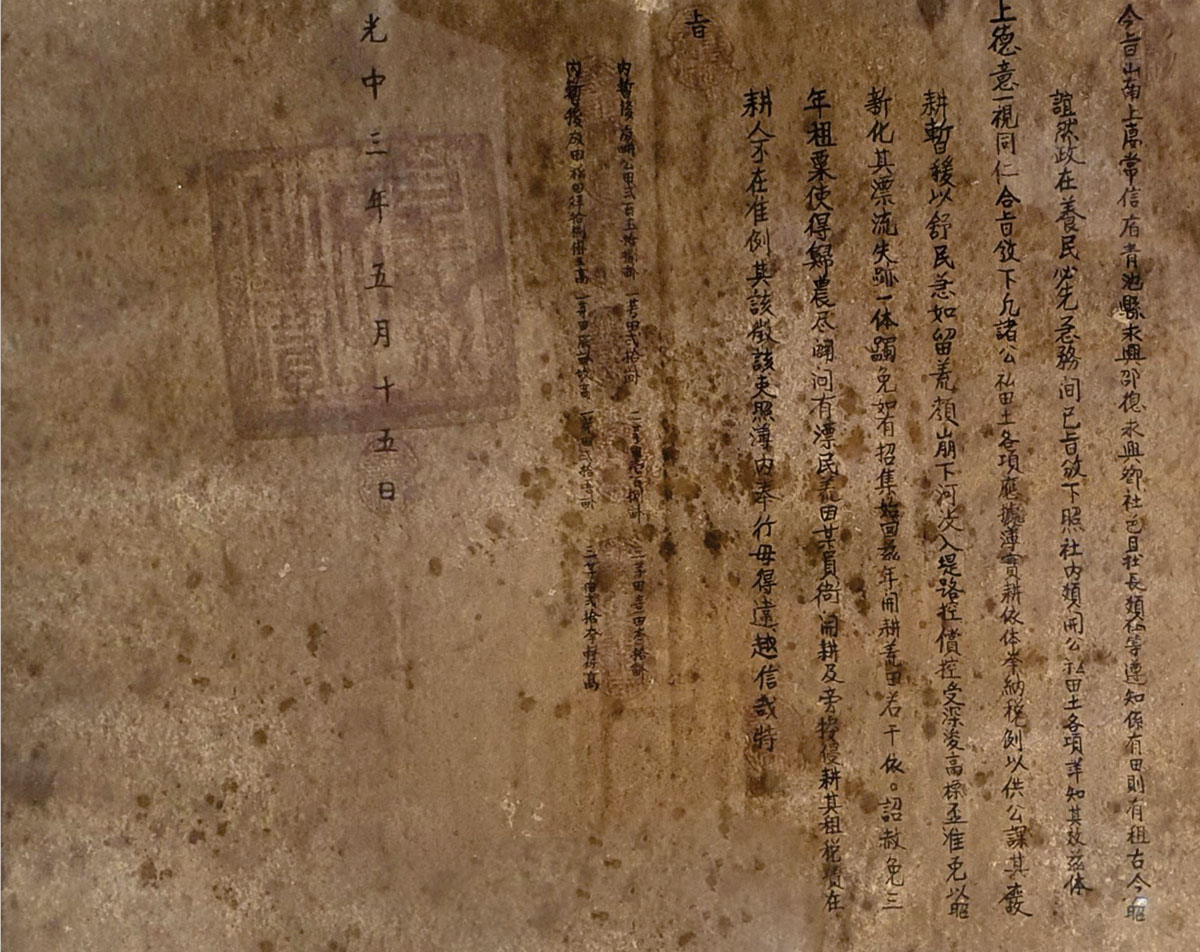
King Quang Trung issued an “Chiếu khuyến nông” (Royal Edict for Agricultural Extension) to restore agricultural production and restore and develop the economy. Thanks to those resolute measures, by the fall of 1791, by the fall of 1791 the harvest was bountiful and half of the country was at peace.
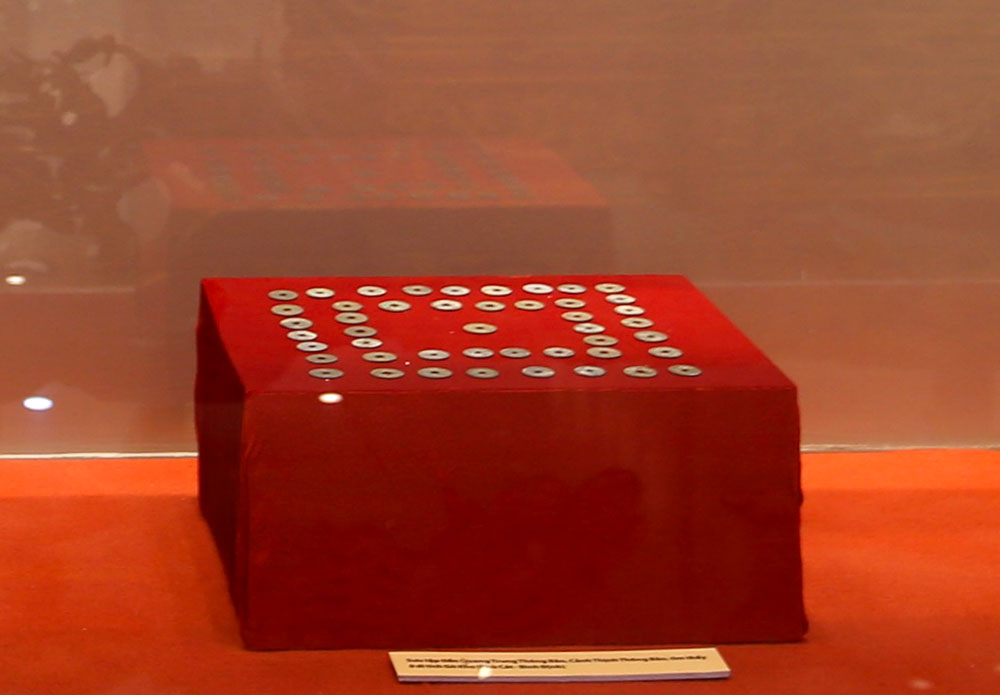
Quang Trung ordered the abolition of many previous heavy taxes, encouraged industrial and commercial activities, expanded trade relations with foreign countries, some northern border gates were reopened, border markets such as: Ky Lua, Hoa Son (Lang Son), Muc Ma (Cao Bang) were restored. A real evidence proving the economic development of this period is the discovery of pre-ancientists: The Quang Trung Dynasty only existed for more than 3 years (1788-1792), but Quang Trung has had at least 17 mintings of coins with 21 different types. (Glass display case for collection of Tay Son Copper coins discovered at Cat Minh-Phu Cat in 1998).
Royal Edict for Agriculture production
A royal edict of Quang Trung in 1790 on translating classical Chinese texts into Vietnamese script
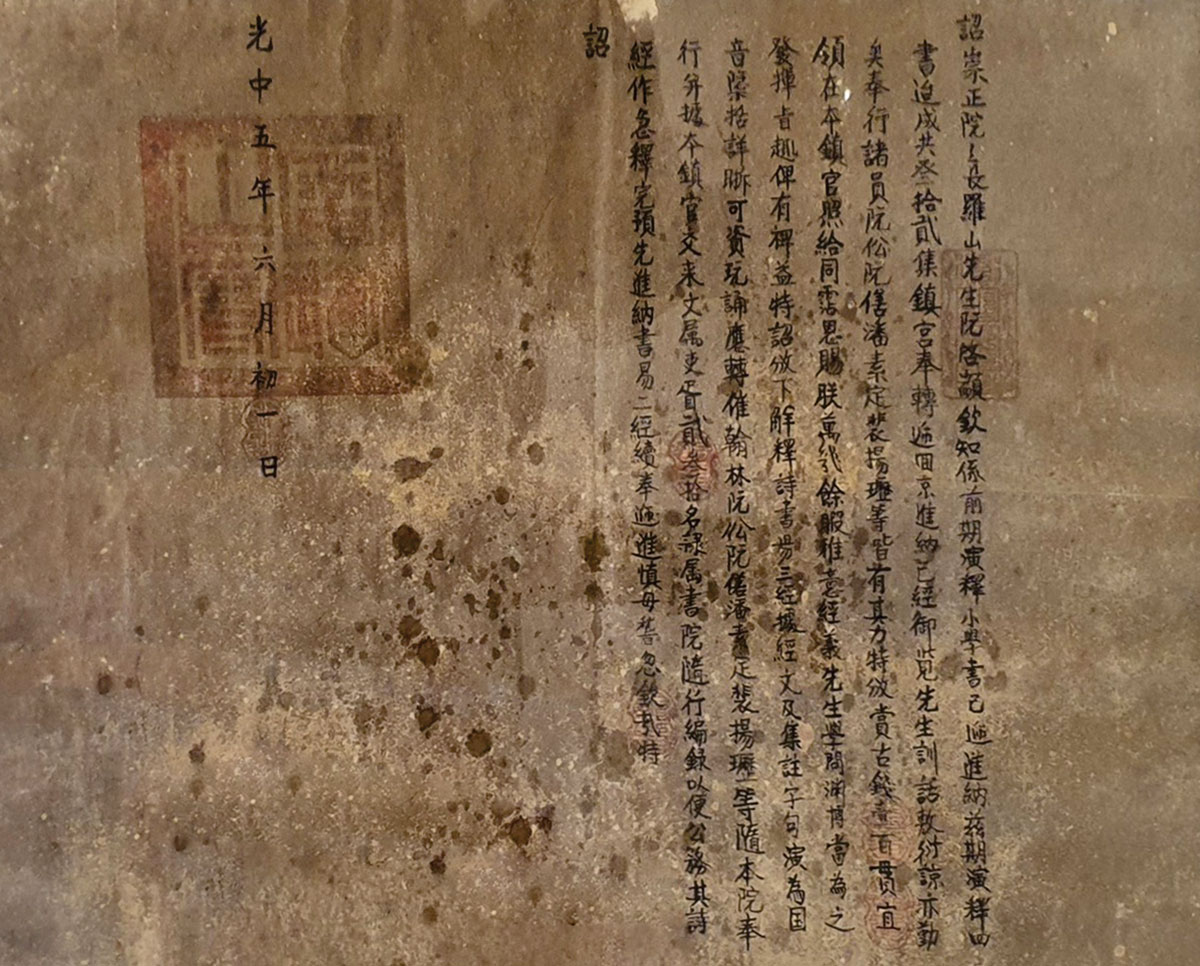
In 1790, although he was still very busy, he immediately opened the Huong exam (with Nguyen Thiep as Chairman of the examiners’ board) to select talented people. Also in the same year, King Quang Trung promulgated the “Chiếu lập học” (Royal Edict on the establishment of education) to restore and develop educational culture. He always values Nom script and Vietnamese culture, encourages traditional cultural and artistic activities
A royal edict of Quang Trung in 1790 on translating classical Chinese texts into Vietnamese script
Letter from King Quang Trung to La Son Phu Tu (Chinese characters)
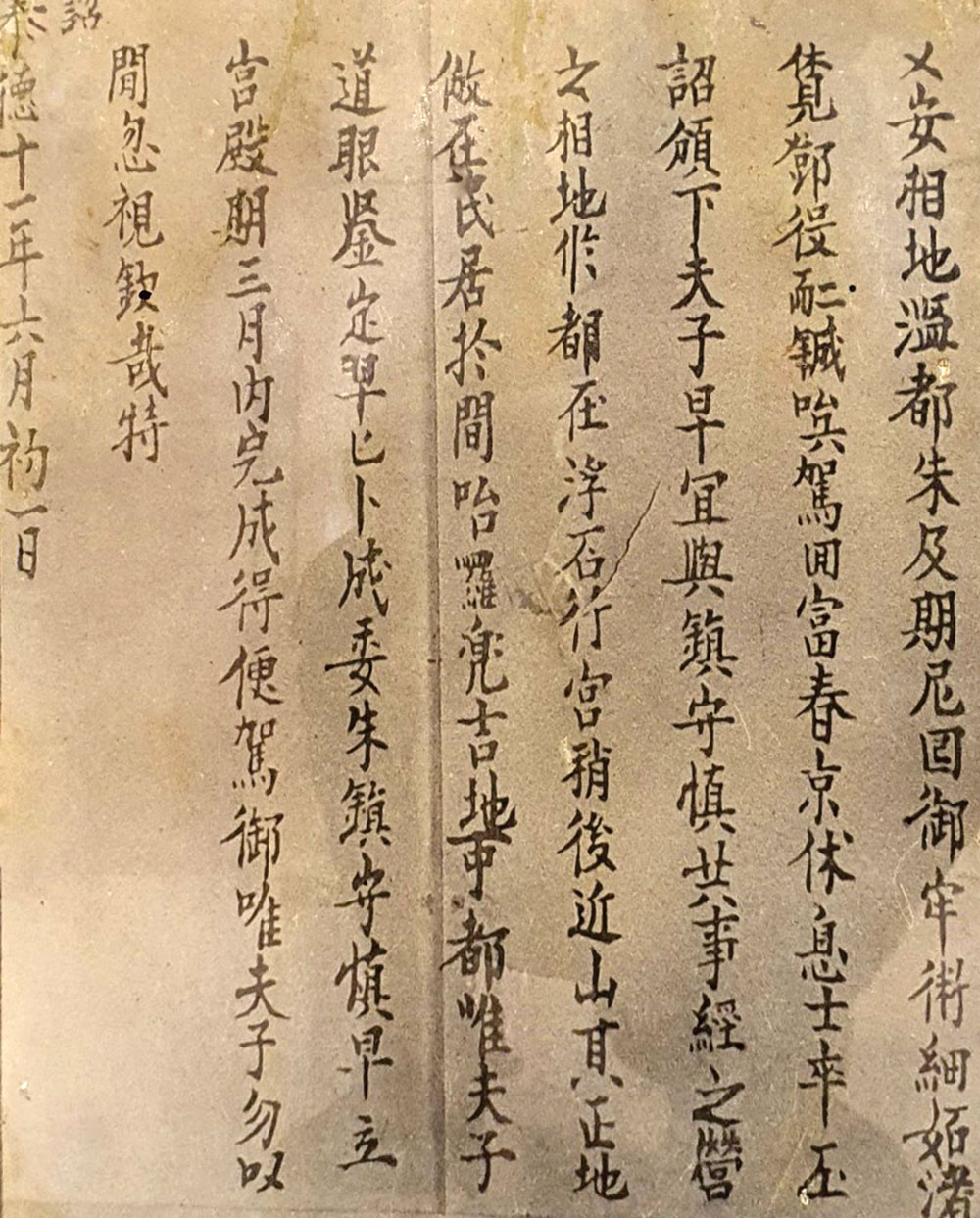
Letter from King Quang Trung to La Son Phu Tu (Chinese characters)
Diagram of Phuong Hoang Trung Do citadel
During his military marches from Phu Xuan to the North, Nguyen Hue quickly realized that Bac Ha (North of Dai Viet country, from the Gianh River border line) was a difficult place to govern, prone to incidents, and too far from Phu Xuan to Thang Long. Therefore, he had the intention of establishing a new capital closer to Bac Ha. The place Nguyen Hue chose was Nghe An. Nghe An is the halfway point between Phu Xuan and Thang Long, convenient for travel. Another reason is that Nghe An is Nguyen Hue’s ancestral land. The Nguyen family in Tay Son is originally from the Ho family in Hung Nguyen, Nghe An. Setting up the capital in Nghe An is also easy to win people’s hearts when the people of this country have suffered because of the war and hate both King Le – Lord Trinh in Dang Ngoai and Lord Nguyen in Dang Trong.
After many times choosing land for construction, finally the new citadel of King of Northern Conquering Nguyen Hue – later King Quang Trung, was also started. Phuong Hoang Trung Do, also known as Trung Kinh Phuong Hoang Citadel, was built between Phuong Hoang mountain (ie Dung Quyet mountain) and Ky Lan mountain (ie Meo mountain), in old Yen Truong commune, Chan Loc district (now belongs to Vinh city, Nghe An province). The word “Phượng Hoàng” is the name of a precious bird in legend, also the name of Phượng Hoàng Mountain, and “Trung Do” means the capital in the center of the country.
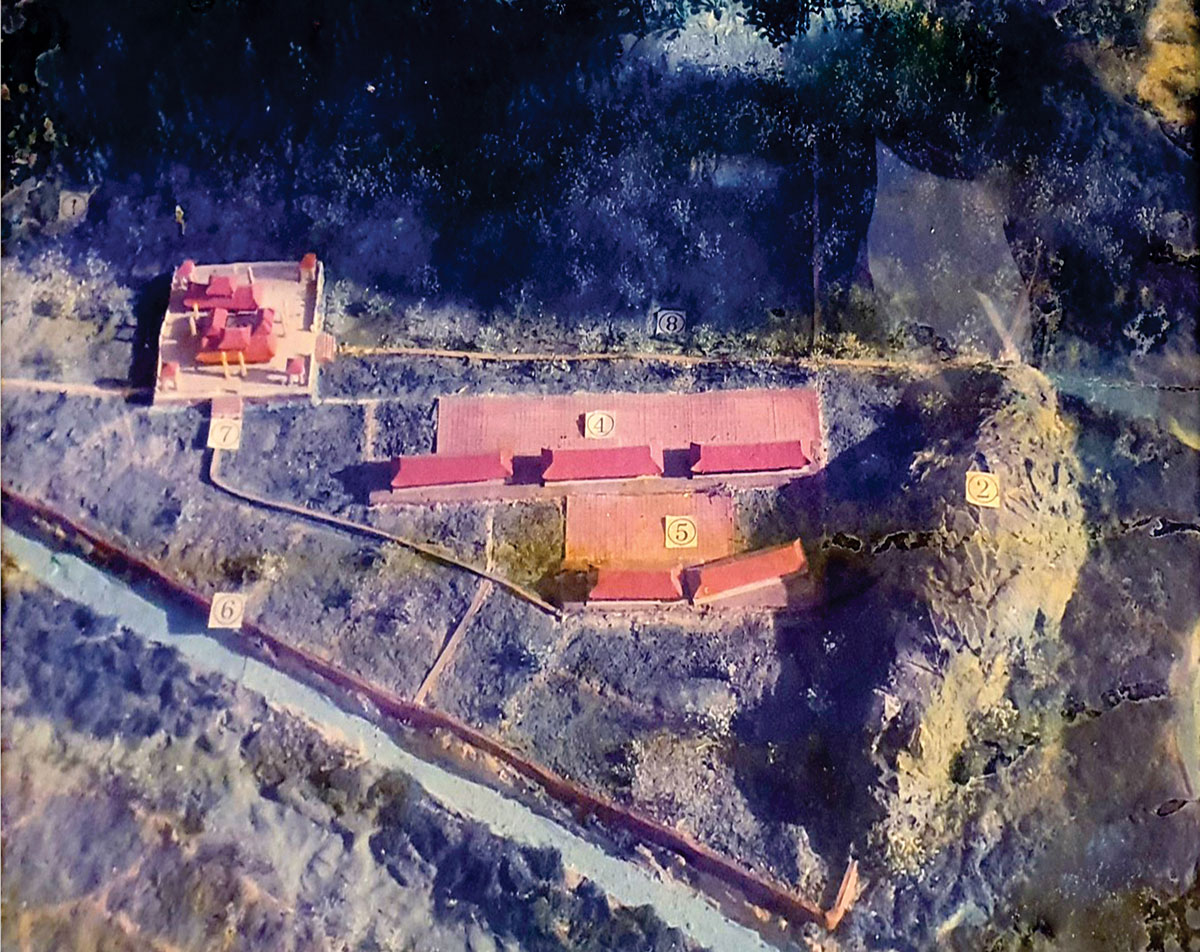
Phuong Hoang Trung Do Citadel was built between 1788 and 1792, depending on the natural terrain. Structurally, the citadel has two rings: the outer citadel and the inner citadel. The outer citadel has a trapezoidal shape, circumference of 2,820m, area of 22ha, wall 3 – 4m high, outside has a moat 3m wide, 3m deep. The citadel wall was built in combination with mountain cliffs as natural ramparts. The outer citadel has 3 gates: Tien gate (South), Ta gate (East) and Huu gate (West). The inner citadel was built of bricks made of terracotta and laterite, with a circumference of nearly 1,680m and a height of 2m; Large doors open to both East and West directions. In the inner citadel, there is a large multi-storied house, 3 floors high, in front there are three-step staircase by laterite, in the back there is a corridor connecting to Thai Hoa Palace used for holding court.
Unfortunately, in September 1792, King Quang Trung suddenly passed away. At that time, Phuong Hoang Trung Do was basically completed, but the King had not yet had time to move the capital from Phu Xuan to Nghe An. King Quang Trung’s successor, Canh Thinh – Nguyen Quang Toan, did not move the capital as advised by his father King Quang Trung but remained based in Phu Xuan. Phuong Hoang Trung Do Citadel was gradually forgotten and became ruins.
Although Phuong Hoang Trung Do was not officially the capital and had a short and unfortunate fate, it was the passion of King Quang Trung and had great significance in a period of Dai Viet’s turbulent history, demonstrating the King Quang Trung’s vision and aspirations for a peaceful, unified, and prosperous country
Materials: Phuong Hoang Trung Do – the connection of the past with the present; New Hanoi Newspaper (December 5, 2019)
Diagram of Phuong Hoang Trung Do citadel
Quote from President Ho Chi Minh with posterity’s gratitude to national heroes and Emperor Quang Trung
Quote from President Ho Chi Minh with posterity’s gratitude to national heroes and Emperor Quang Trung “Our history has many great resistance wars that demonstrate the patriotism of our people. We have the right to be proud of the glorious historical pages of the eras of Ba Trung, Ba Trieu, Tran Hung Dao, Le Loi, Quang Trung, etc. We must remember the merits of our national heroes, because they are typical of a heroic nation”

President Ho Chi Minh
Excerpt from the Political Report at the National Party Congress in February 1951
Quote from President Ho Chi Minh with posterity’s gratitude to national heroes and Emperor Quang Trung
Photos of Dong Da Mound Festival in years
These are some pictures of the Dong Da Mound Festival held on the 5th day of Tet every year to preserve and promote the cultural spiritual values of the nation, continue the patriotic tradition, express deep gratitude to the generations who have sacrificed for the independence and freedom of the Fatherland; affirm the position, great stature, and great historical value of the Ngoc Hoi – Dong Da victory in the history of the struggle to build and defend the country of the Vietnamese people.













Photos of Dong Da Mound Festival in years
Painting of King Quang Trung entering to liberate Thang Long citadel
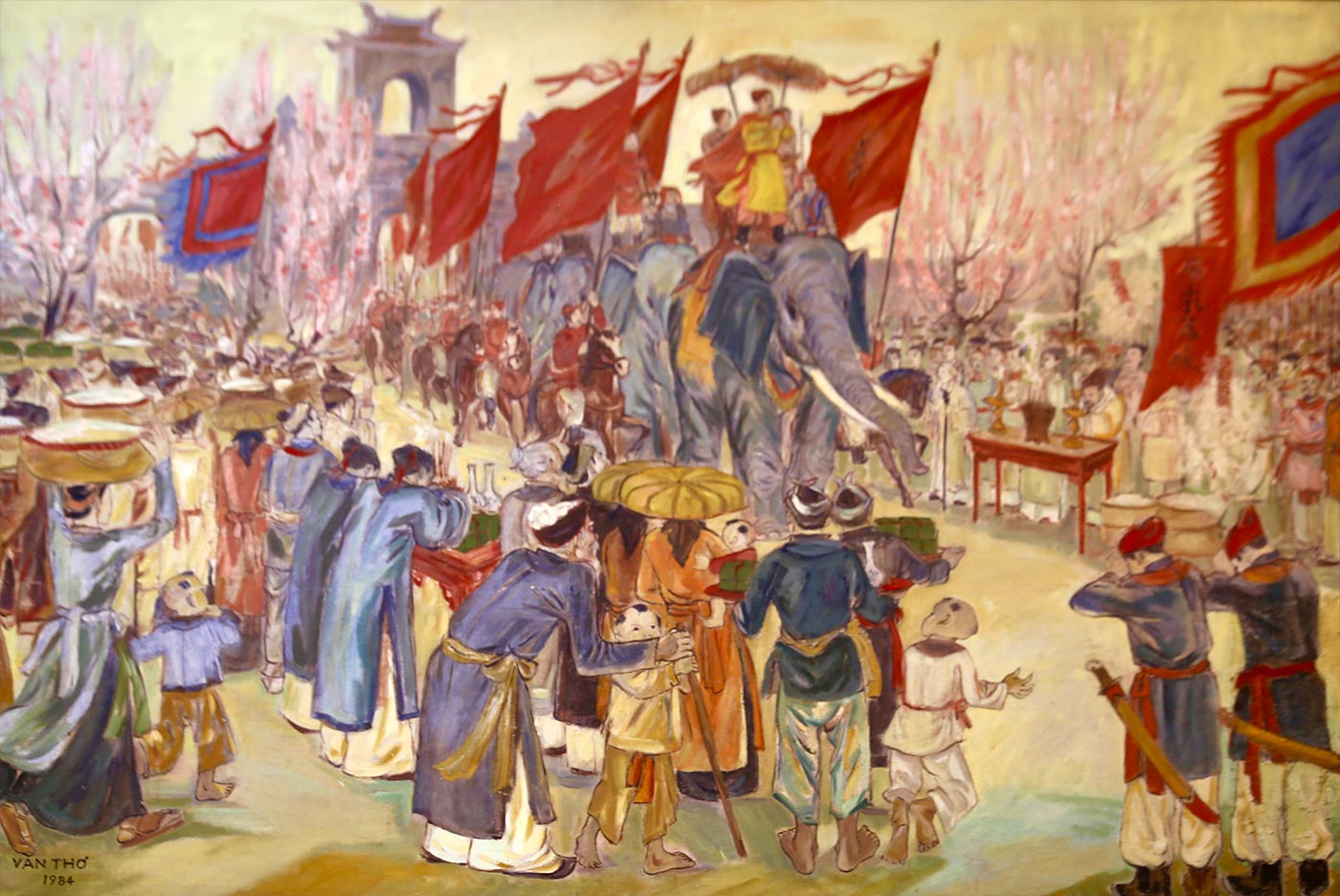
Photo of the “Khúc khải hoàn ca” (song of triumph) of the Tay Son insurgents and their army when entering Thang Long citadel on the 5th day of the Tet 1789 with the cheers from our people at both sides of the road
Painting of King Quang Trung entering to liberate Thang Long citadel
Scale model of Ngoc Hoi – Dong Da battle
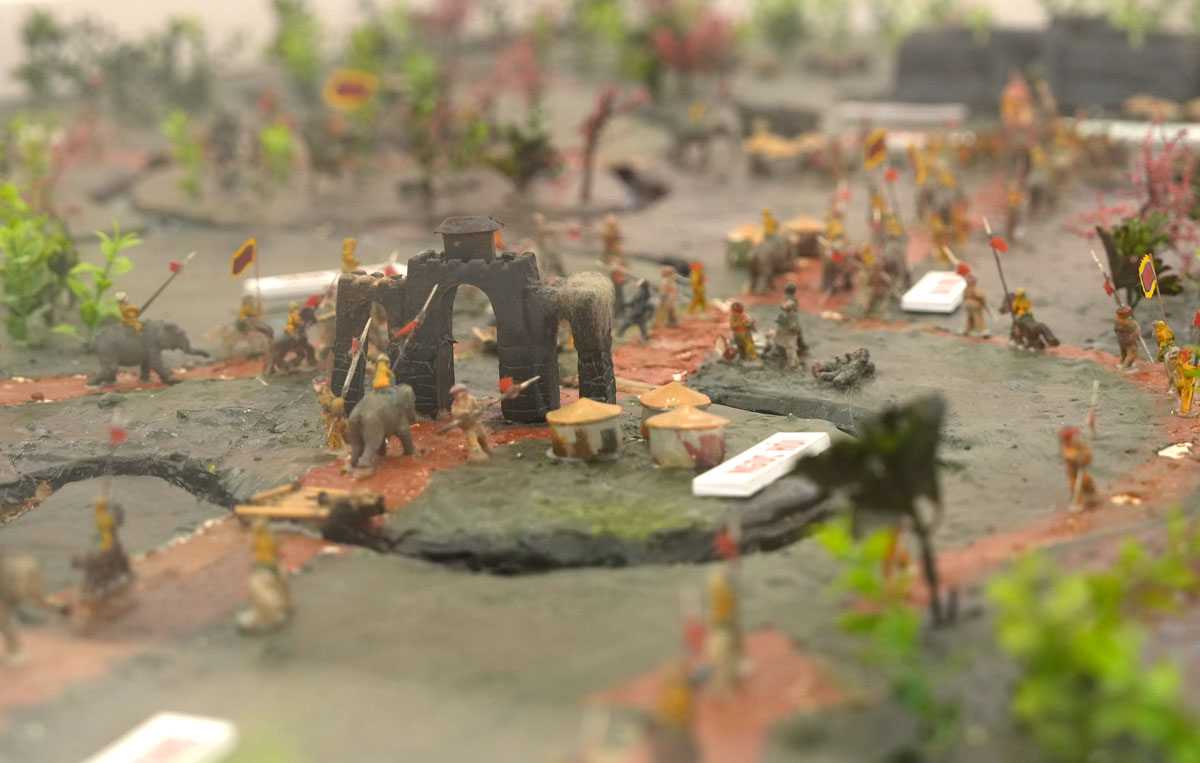
Scale model of Ngoc Hoi – Dong Da battle
Sword
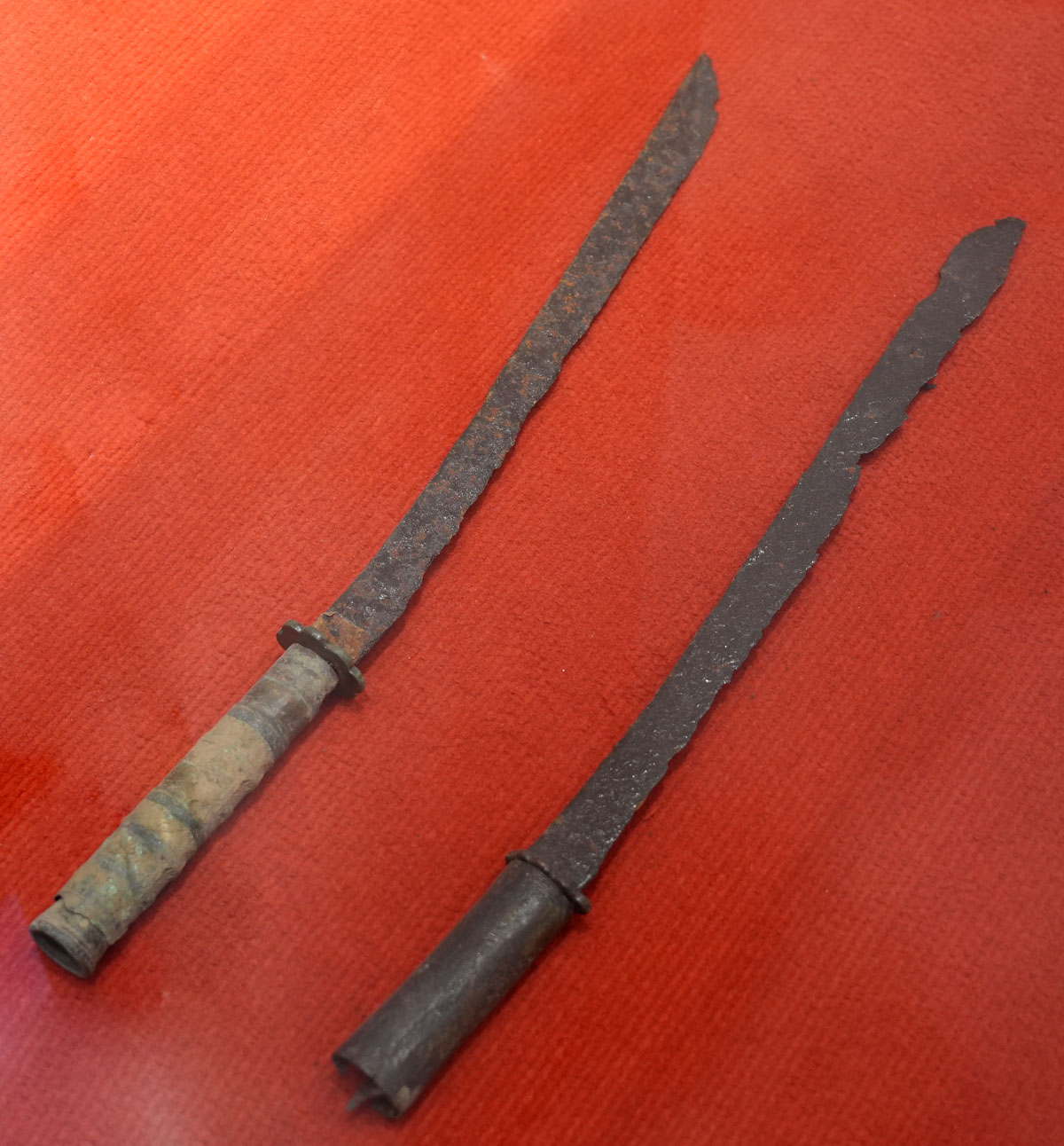
Sword
Dao (Chinese sword)
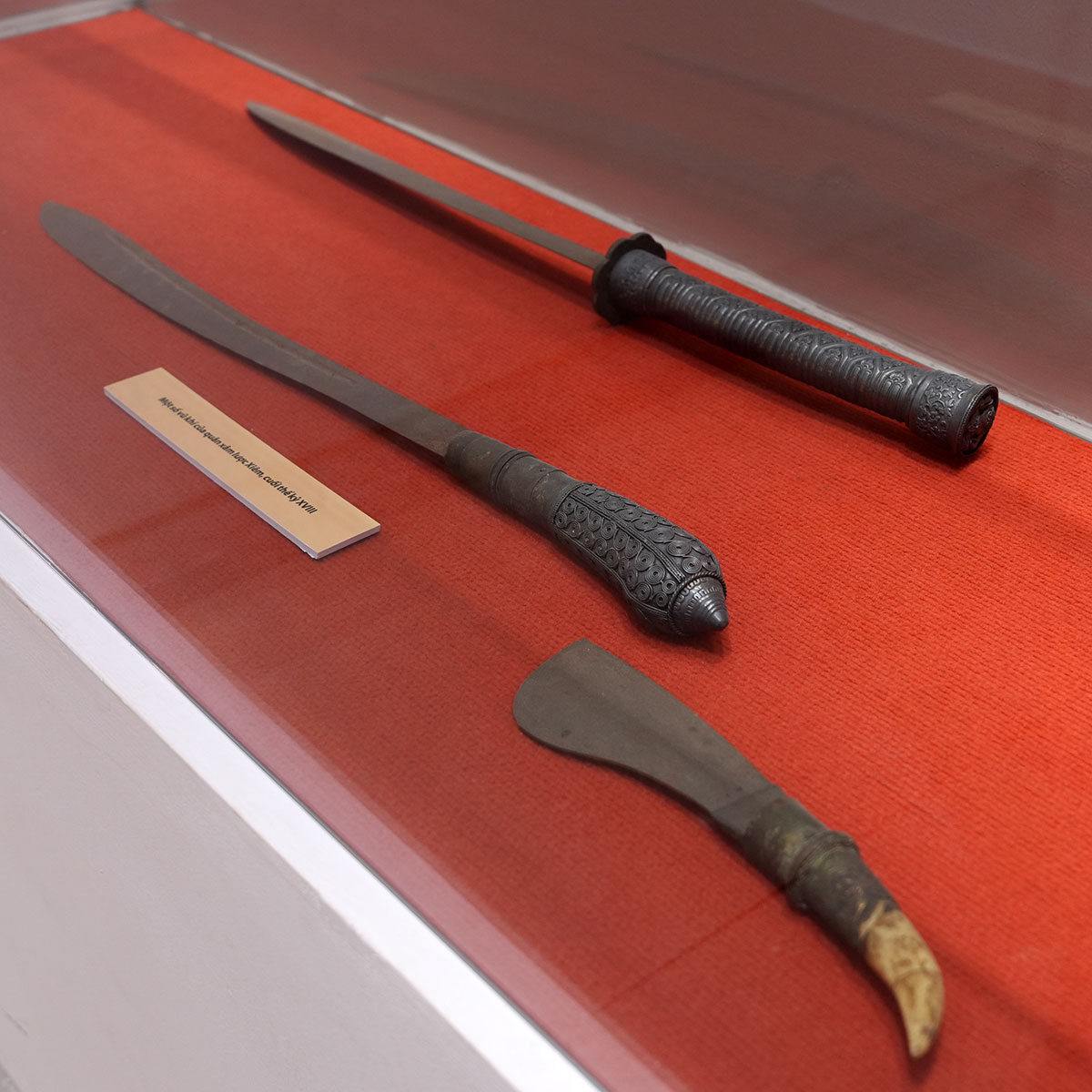
Dao (Chinese sword)
Flaming Tiger Cannon

Flaming Tiger Cannon
Cannon

Cannon
Seal

Seal
Command flag 01

Command flag 01
Luu Hoan Fire Ball
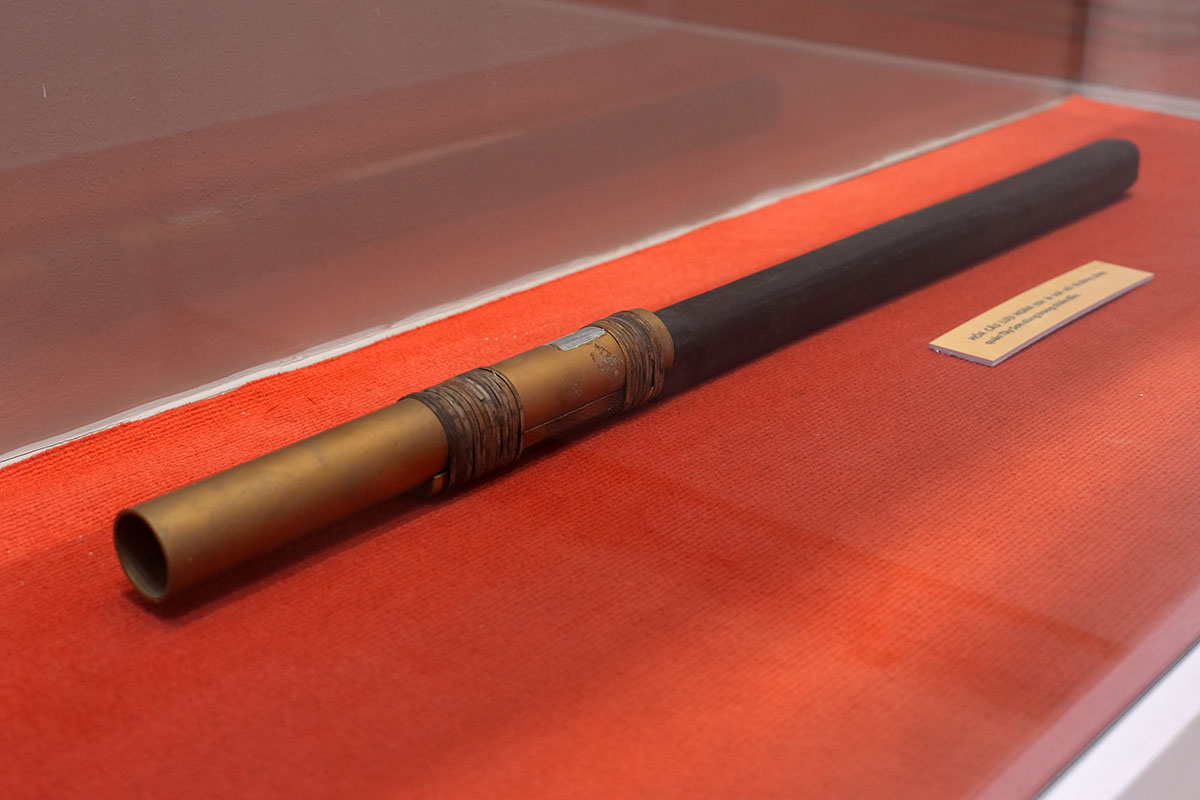
Luu Hoan Fire Ball
Quang Trung Ancient coin
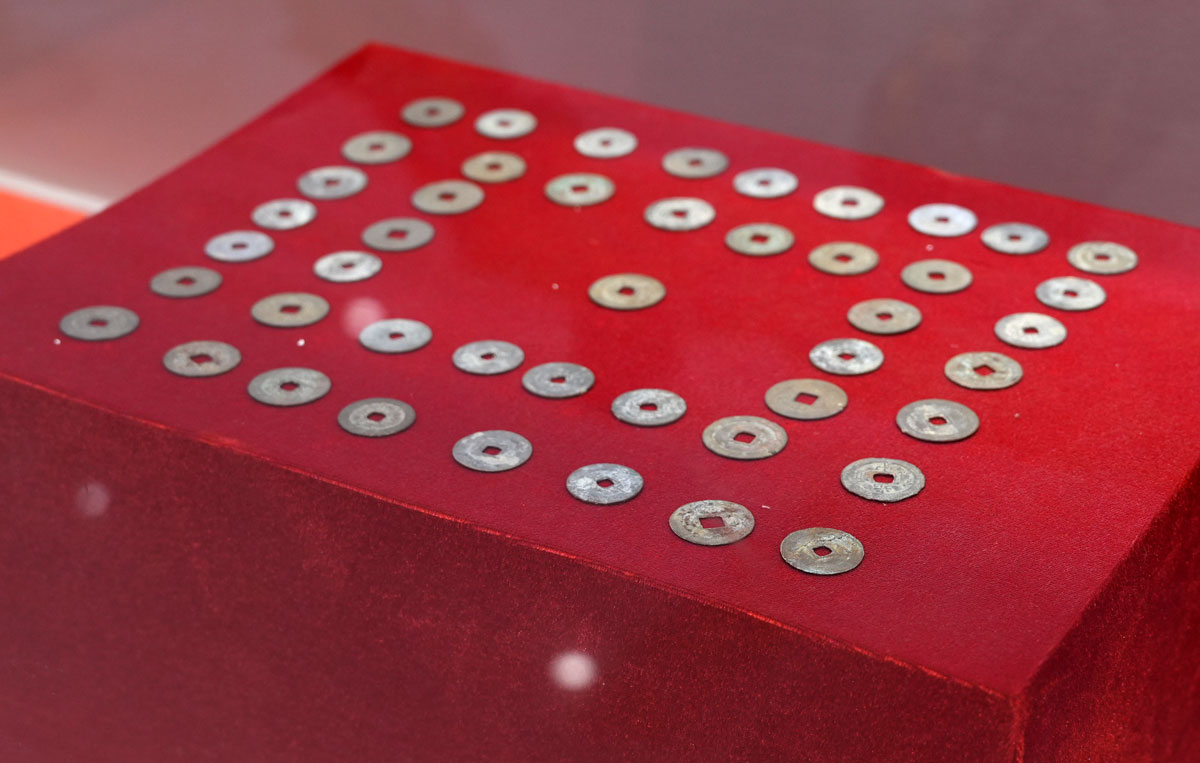
Quang Trung Ancient coin
Brick

Brick
King Quang Trung’s statue

King Quang Trung’s statue
Statue of Admiral Dang Tien Dong

Statue of Admiral Dang Tien Dong
Bat Buu
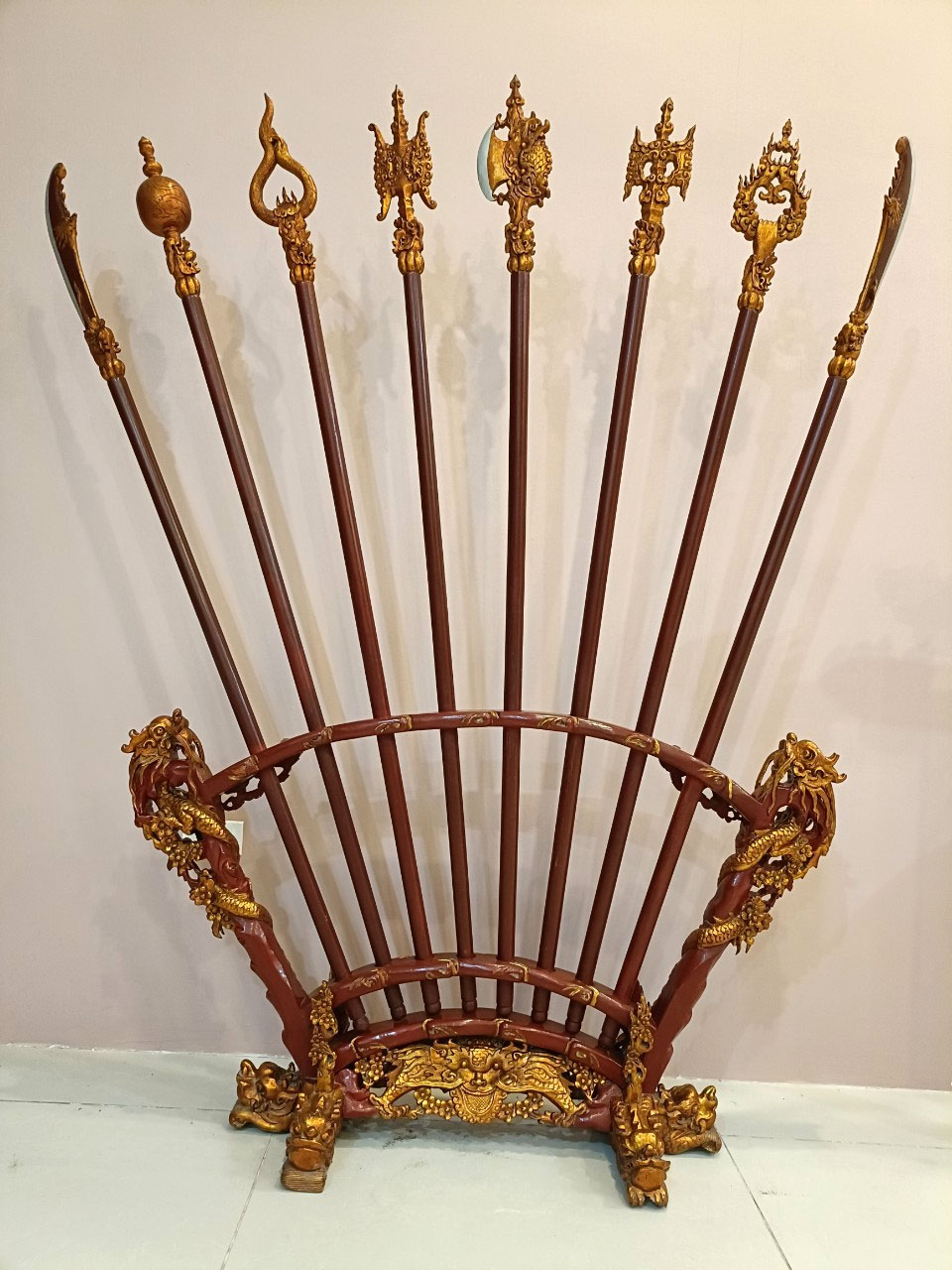
Bat Buu
Laterite to build the Imperial Citadel
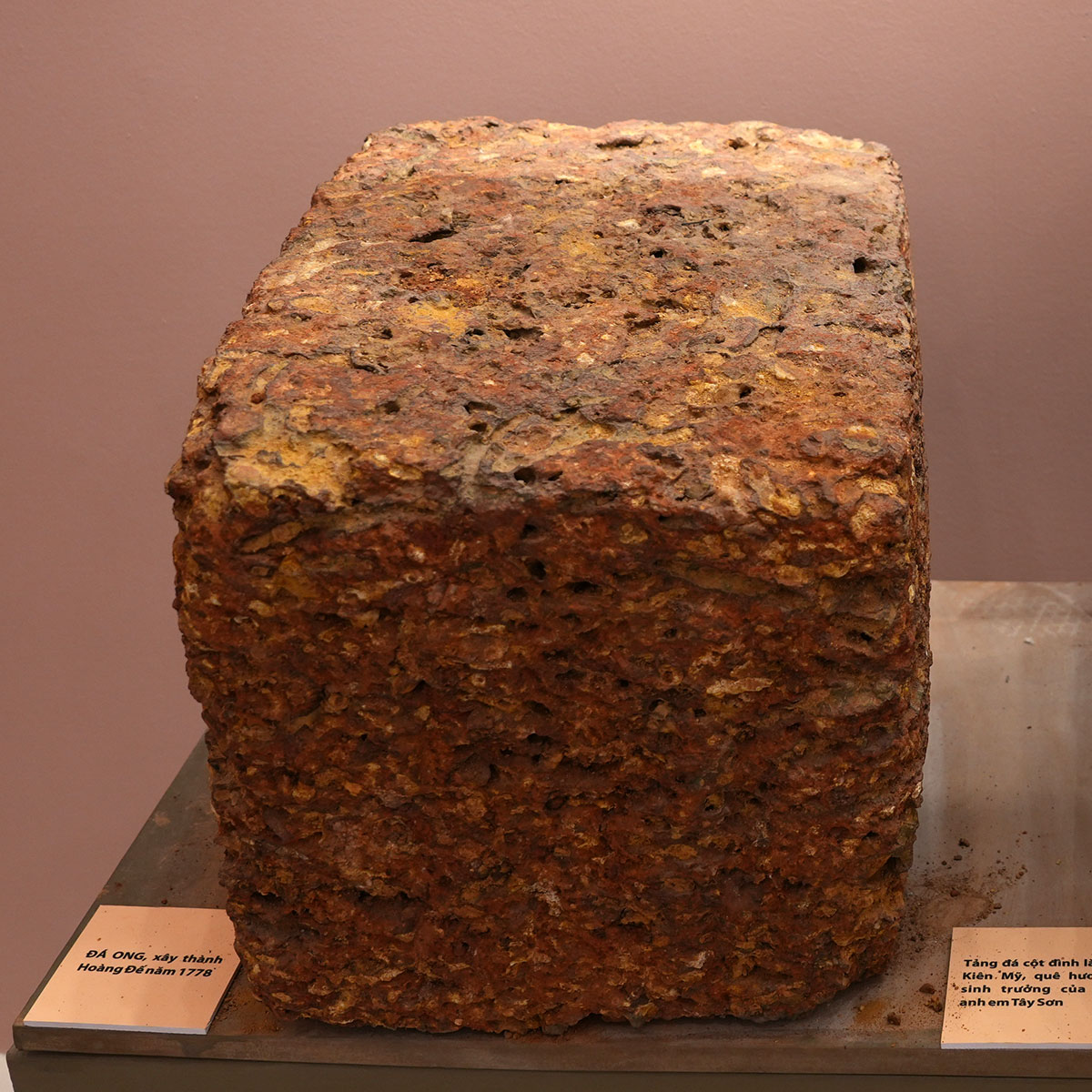
Laterite to build the Imperial Citadel
Rock
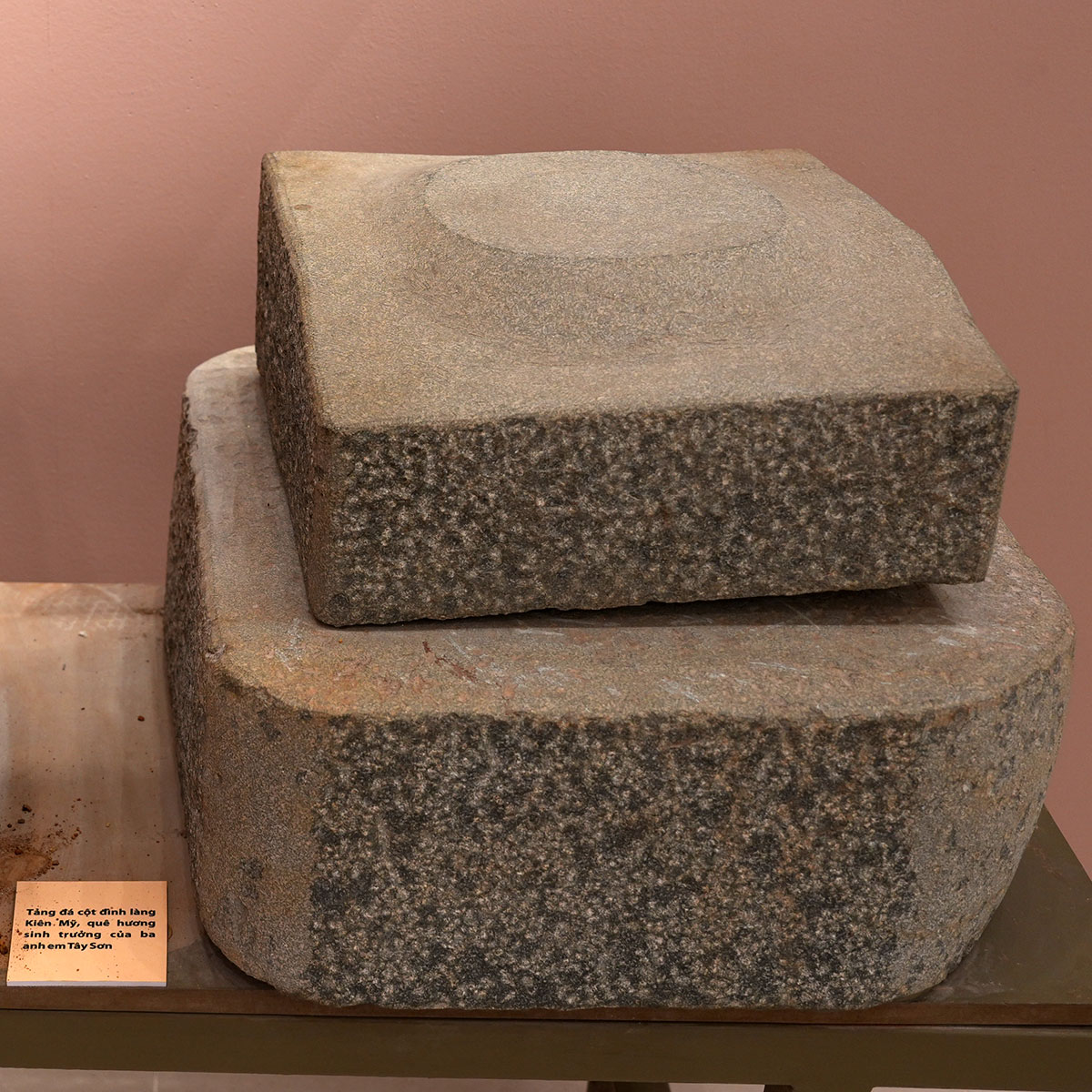
Rock
Bell
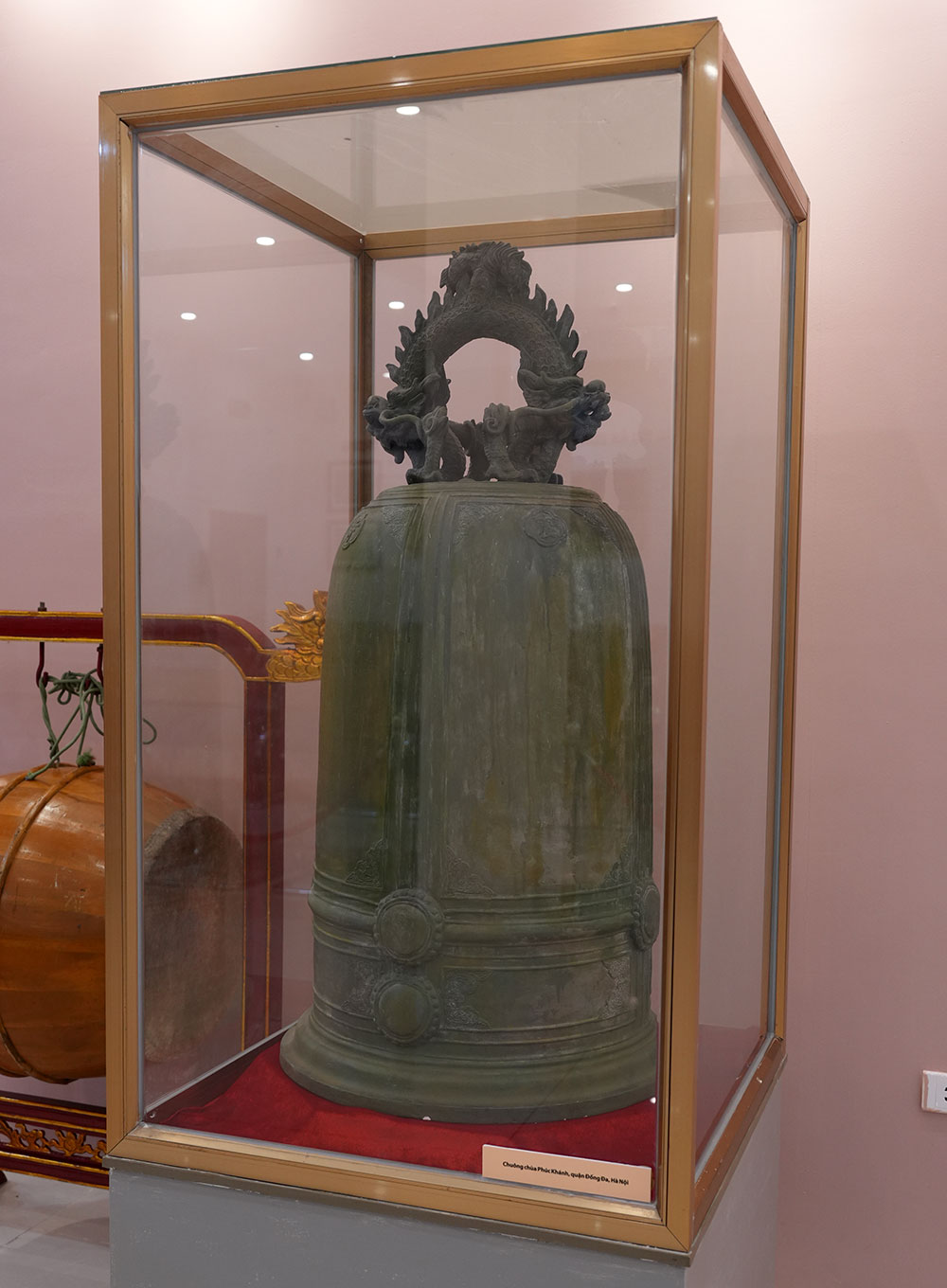
Bell
Gong Sets
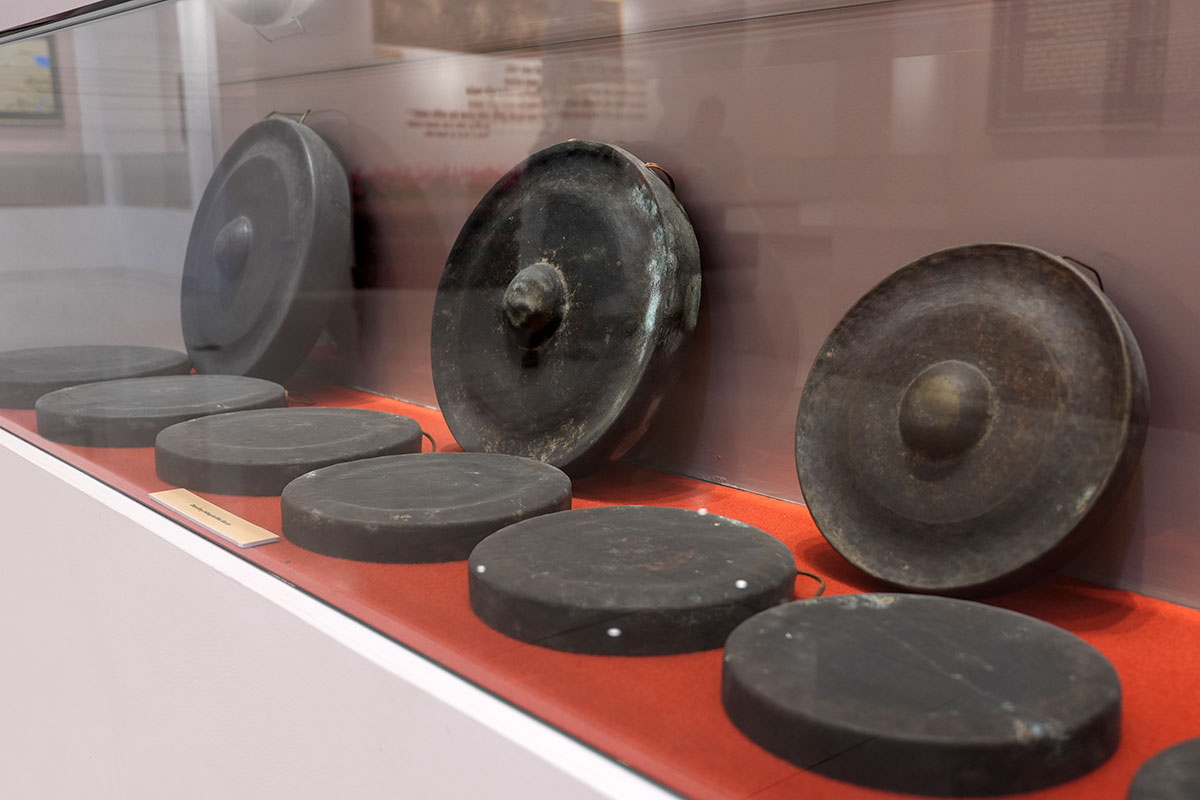
Gong Sets
Big drum
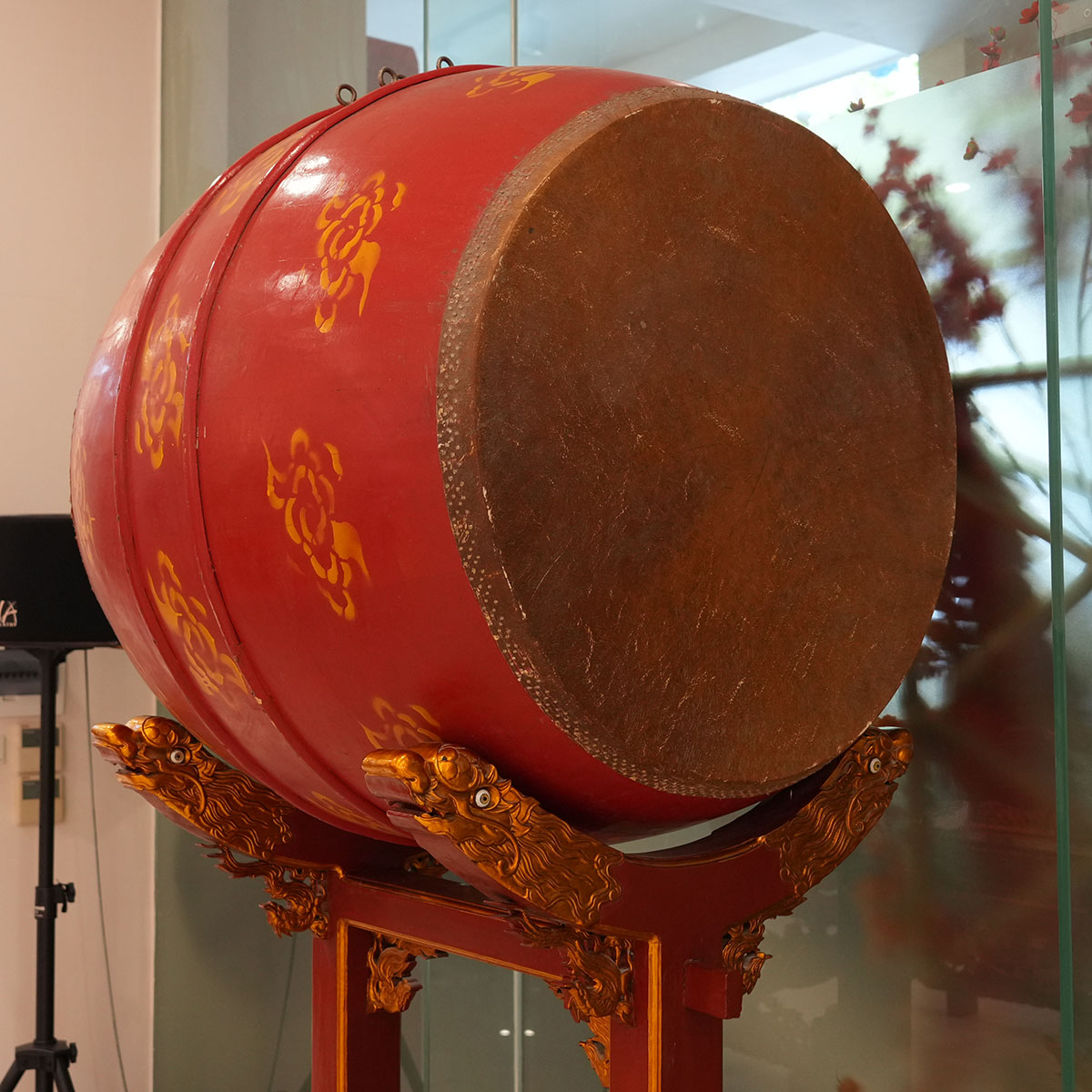
Big drum
Small drum
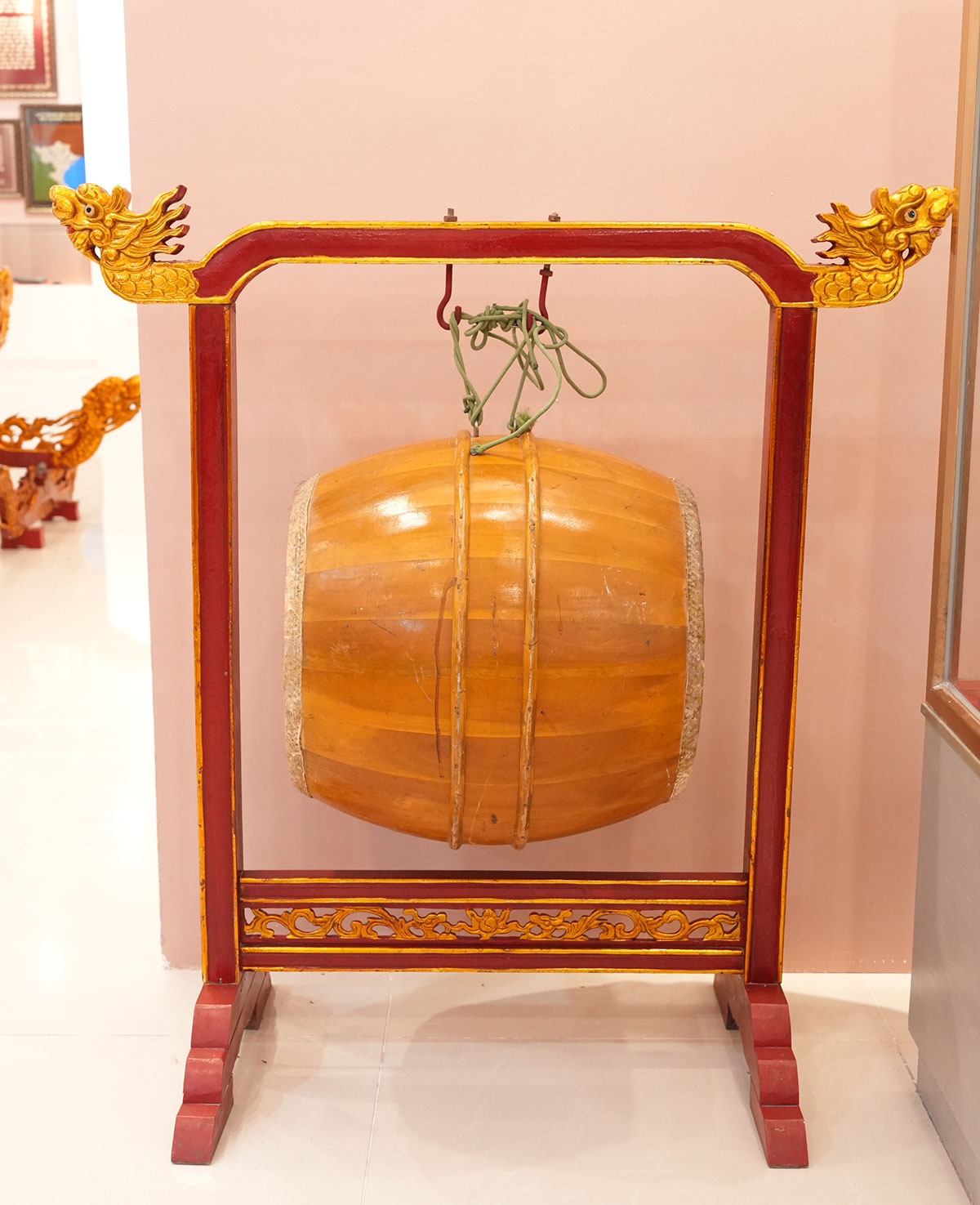
Small drum
Ancestor Tombstone
About the stone stele of Tay Son Ancestor Tomb: In April 1990, during the excavation process for the road, the people of Phu Lac village discovered a stone stele buried in mud, the stele was made of green stone with dimensions: 125 x 68 x13 cm, weighs about over 200kg, the front of the stele has three rows of very delicately engraved letters: The large row of letters in the middle reads: “VIỆT CỐ HOÀNG HIỂN TỔ KHẢO CANG NGHỊ MƯU LƯỢC MINH TRIẾT CÔNG CHI LĂNG” the meaning of this large line of text: The tomb of the deceased grandfather of the king of Vietnam, he was a wise, resourceful, and steadfast man. Next to it is a line of text with content: Tuế thứ kỉ hợi trọng xuân cốc nhật – This stele was established on an auspicious day in February, year of Ky Hoi – 1779. On the left side are the two words Ngự chế – meaning the king erected the stele. Research confirms: This is the tombstone of Mr. Ho Phi Khang, grandfather of the Tay Son brothers. This tomb was built by Nguyen Nhac in 1779 after ascending the throne.

Material: Quang Trung Museum
Ancestor Tombstone
Palanquin
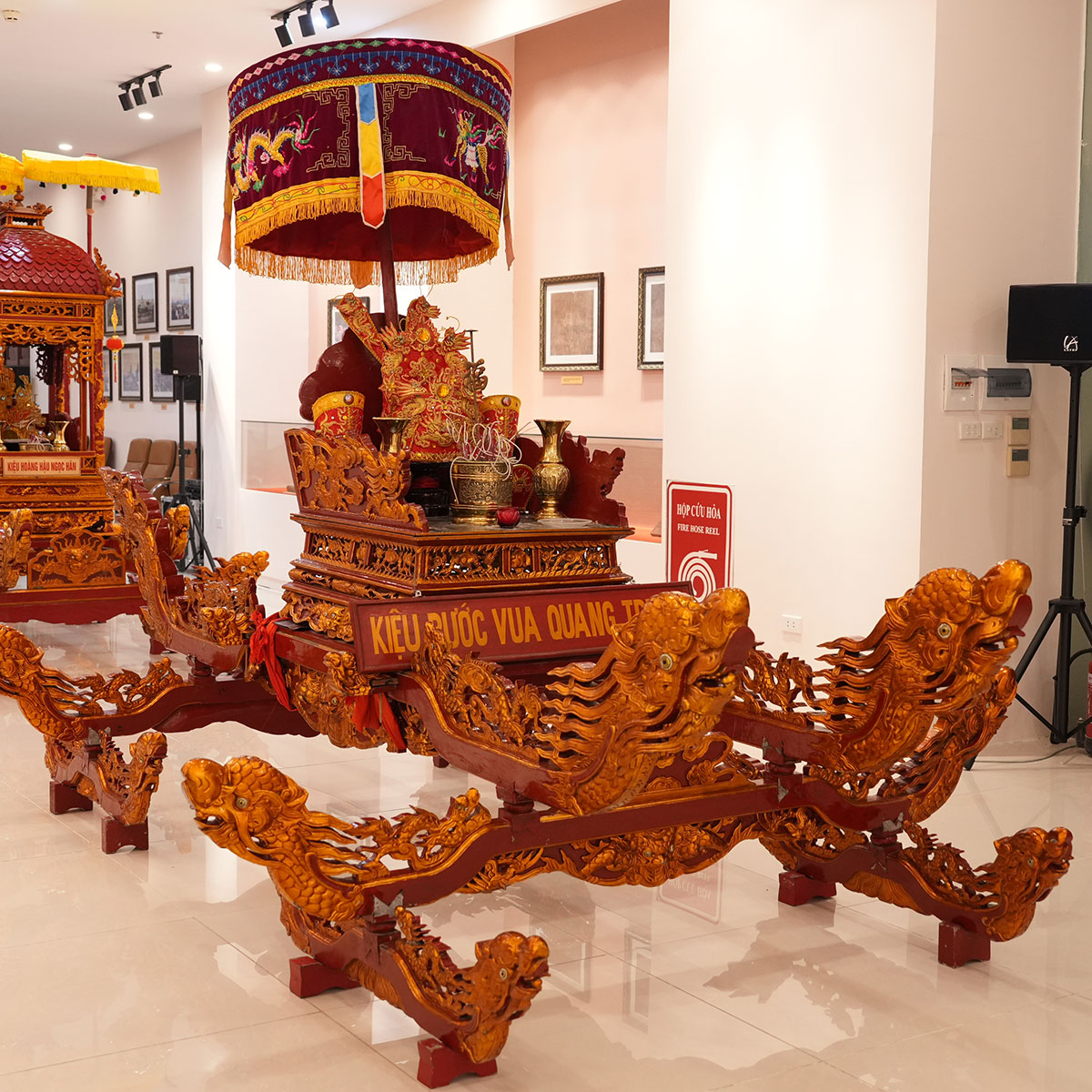



 Tiếng Việt
Tiếng Việt